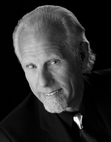Paul Bishop's Blog, page 19
February 1, 2018
INTERROGATING THE INTERROGATOR
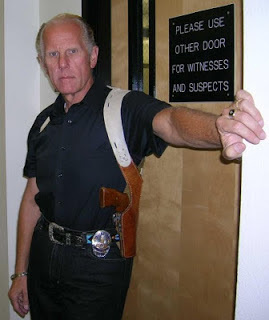 INTERROGATING THE INTERROGATOR
INTERROGATING THE INTERROGATOROn his blog today, Mark Hatmaker interviews me about the professional interrogator side of my life...A different perspective from my writing life...
With this wealth of experience in mind, what I want to hone in on is how we the common everyday Joe can see the world and our interactions with our fellow humans a bit more through your interrogator’s eyes. With that said, let me ask, have you found that your skills in the professional sense have had a bleed-over into your everyday personal interactions outside the job? If so, can you provide a few examples?
The harsh fact is everybody lies on average seven times a day. Most of these are small, white lies, which have become so automatic they no longer register. When was the last time you actually read all those Terms& Conditions? But I bet you regularly check the box saying you did. What husband hasn’t ducked for cover behind a lie when confronted with the question, Honey, do these pants make me look fat? These types of lies are relatively harmless. We accept them in stride, but they add up and provide us with the justification for larger lies.
As an expert in deception detection, I am acutely, empathically, aware of emotional bleed from everyone around me. I also pick up on tone and intonation like hearing fingernails on a chalkboard—not what is said, but the truth in the way it is said. If I called everyone in my private life on their lies, I’d have no friends left.
A core tenet of interaction is not simply being able to divine message, spoken and unspoken, but to put the person across from us at ease. What advice would you offer to the reader to better put the people we interact with every day in a better communication light?
If I bring judgement into the interrogation room, the suspect is going to immediately sense it on a subconscious level. It’s hard to push judgement aside when we are dealing with people who are close to us, but it is necessary to the process. The same thing applies to personal agendas or blindly twisting the facts to fit a preconceived theory. Our natural tendencies to these behaviors has to be recognized and removed as barriers to communication.
To really communicate, we have to get out of the way of our ego. Are you consciously making the effort to listen to what somebody is saying, or are you just waiting fo your turn to talk? After you have listened to somebody consider paraphrasing back to them what you think they said. This shows the other person they have actually been heard, and allows for any corrections due to miscommunication.
Published on February 01, 2018 12:54
January 20, 2018
WOLFPACK’S WILD WEST
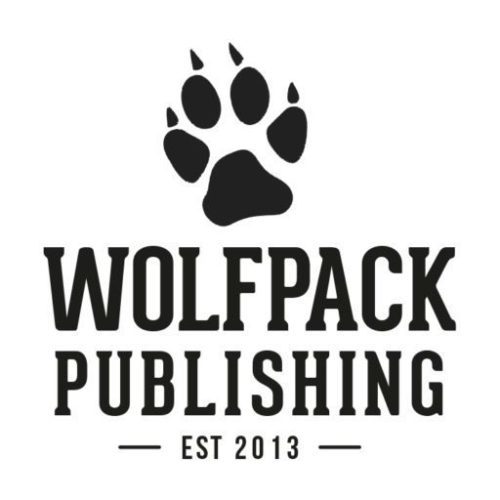 WOLFPACK’S WILD WESTROUND THE CAMPFIRE WITHWOLFPACK PUBLISHING’SMIKE BRAY
WOLFPACK’S WILD WESTROUND THE CAMPFIRE WITHWOLFPACK PUBLISHING’SMIKE BRAYWolfpack Publishing is rapidly becoming the top publisher of Western series and is now branching out to embrace the men’s adventure genre. Founded in June 2013, by Mike Bray and L.J. Martin, Wolfpack found immediate success by with an impressive list of western authors and their release ready back-list. In three years, Wolfpack sold two million books and went on to sell another million in 2017. Publisher Mike Bray assumed almost complete responsibility for Wolfpack when L.J. Martin retired in 2016. Hard working and with a strong crew behind him, Mike is a busy guy, but I was able to get him to sit down around the virtual prairie campfire for a few minutes to discuss some of the reasons behind Wolfpack’s success…
********
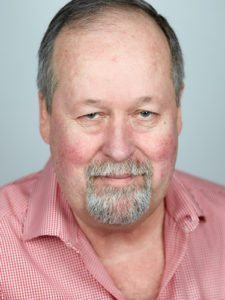 If the Texas Rangers pinned a wanted poster for Mike Bray on the sheriff’s office wall, what pertinent information would it contain?
If the Texas Rangers pinned a wanted poster for Mike Bray on the sheriff’s office wall, what pertinent information would it contain?I’ve been in search engine marketing and search engine optimization for the last 25 years. And I love it. I love reverse engineering algorithms, competitor’s websites and marketing campaigns. SEO/SEM is like playing a game or solving a puzzle for me. Confucius got it right when he said, “Choose a job you love, and you’ll never work a day in your life.”
What are your first memories of reading?
My Grandfather caught me running a horse on the pavement (trying to kick up sparks) when I was around ten. His punishment was to send me into his library to grab a book. I was then restrict to the house until I finished the book, or my parents came to pick me up. The smallest book in his library was The Perfect Tribute by Mary Raymond Shipman Andrews. I was still reading when my parents came to gather me up.
I shocked the hell out of everyone (including myself) when I asked if I could take the book home to finish. A few weeks later, The Wonderful World of Disney featured the movie, and I remember thinking the book was better. And just like that, I was hooked on reading. A couple years ago Wolfpack published The Perfect Tribute. It is our only public domain title and doesn’t make much money, but it makes me smile every time I see a sale come through.
When did you first begin to read widely in the Western field?
The same Grandfather was an avid western fan. He would read 3 or 4 books a week. After he found out I could read, he kept me stocked with books. As a kid I would much rather spend my evenings with Grey or L’Amour than wrestling with three brothers and my parents over which re-run we were going watch from the three network channels on our little black and white television.
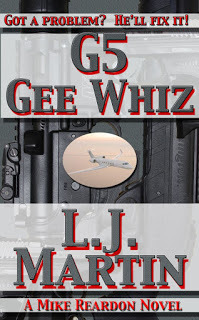 Can you tell us a little about the history of Wolfpack Publishing and your friendship with L.J. Martin?
Can you tell us a little about the history of Wolfpack Publishing and your friendship with L.J. Martin?L.J. and his wife, Kat Martin, and I go back thirty years. We were in the real estate game together. I even dated Kat’s sister for a few years. I was around when both L.J. and Kat Martin sold their first books and have thoroughly enjoyed following their careers over the years.
In 2009, L.J. and Kat asked me for some help with their backlist titles, which L.J. had self-published. So, there I was with a backlist from a New York Times bestselling romance author and a mid-list western author to play with—almost eighty titles all together—a big enough sample with which to do some serious testing.
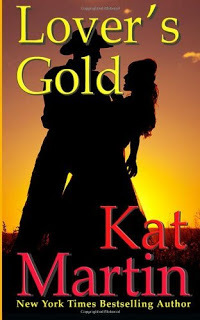 When it came to Kat’s titles it was white horse/white hat all the way. But anybody in internet marketing knows that if you aren’t pushing the envelope hard enough to get an occasional spanking, you’re potentially leaving a boatload of money on the table.
When it came to Kat’s titles it was white horse/white hat all the way. But anybody in internet marketing knows that if you aren’t pushing the envelope hard enough to get an occasional spanking, you’re potentially leaving a boatload of money on the table. With L.J.’s titles, I was able to get a little frisky. Nothing too scandalous—though I might have changed a few publication dates, reinvented a couple sub-genres and exchanged a few reviews. We did a lot of testing with L. J.’s titles, and through our testing we came away with a pretty good picture of how to work with Amazons algorithms.
Is there a story behind the Wolfpack name?
L.J. and Kat Martin built a gorgeous little ranch outside of Missoula, Montana they call Wolfpack Ranch. L.J. is a ready, fire, aim kind of guy and a confident salesman. He purchased the domain name wolfpackpublishing.com before he even pitched me on the publishing venture. If he hadn’t sold me on publishing, he would have found another marketing company to try to duplicate our success for additional authors.
What was it that made you believe you could make Wolfpack Publishing a success in a time when many small publishers are struggling?
We had a proven and tested model with L.J.’s backlist. I took the following screenshot in June 2013. We were damn sure holding our own against the biggest names and biggest publishers in the industry and doing it with a backlist that was old enough to vote.
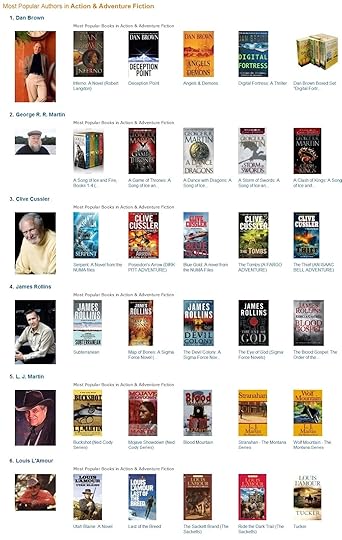 You have said Wolfpack is not so much a publishing company as it is a marketing company. Can you explain your philosophy?
You have said Wolfpack is not so much a publishing company as it is a marketing company. Can you explain your philosophy?Our Managing Editor, Rachel Del Grosso , and her team, kick out two to six new titles per week. I have very little involvement in the production side of the business, so of course I think that’s the easy part.
But we are competing against 5.8 million titles on Amazon and visibility is the key to sales on Amazon. Our marketing gives our titles the visibility needed to walk up a bestsellers list and is by far our biggest expense.
I wish I could say I was a publishing guru, but honestly, our success is based on solid internet marketing. You think genres and sub-genres, I’m thinking niche’s and categories. If I wasn’t selling books, it could just as easily be toasters out of Taiwan—though I’m obviously not as passionate about toasters as I am books.
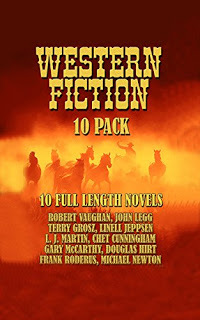 What do you look for when deciding on a new Wolfpack title?
What do you look for when deciding on a new Wolfpack title?Once we find a title we like, we look at the genre to see if we can compete. Then we look at the author. We are looking for long term partners who can deliver product on a consistent basis, whether it’s backlist titles, frontlist titles or a combination of the two.
Finally, we look at how brandable the author is. Do they have a following, a social platform, existing internet properties? And/or does the author have an interesting story we can utilize in building up their brand.
As an example, an author with control of a 15-book backlist who is willing to crank out an additional four titles per year, had a high profile 35-year career as a LAPD detective and has reality TV experience, would have a pretty good shot.
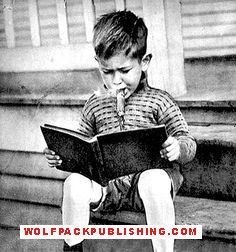 Are there any authors who you would like to publish, but for whatever reason haven’t been able to pin down?
Are there any authors who you would like to publish, but for whatever reason haven’t been able to pin down?I’d love to work with Courtney Joyner and Max Collins so I could pick their brains. I recently started reading Robert Randisi’s mysteries. I hope he remembers Wolfpack as his existing contracts mature. James Reasoner also deserves much more recognition then he receives.
Johnny Boggs, Larry Sweazy, Brett Cogburn’s wife and even Brett have been friends since the first day we met. They are great ambassadors for the genre and the kind of people I’d like even if I was selling toasters. But, I have to remind myself that there are only twenty slots on the first page of Amazon’s bestsellers list for each genre.
Do you have any personal favorites among your Wolfpack titles?
LOL, that’s like asking which one of my kids is my favorite.
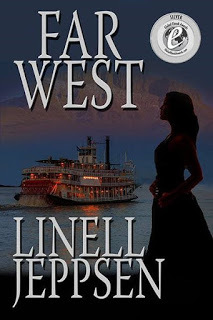 Any particular acquisition coups among the books you’ve published?
Any particular acquisition coups among the books you’ve published?We’ve won some awards and have received a little recognition from the industry. Linell Jeppsen’s Far West won the Peacemaker award for best novel last year from Western Fictioneers, making Linell the first female to win the award and the first person to win Best Novel with a western romance.
The movie rights for Pistole Pete: The Guns of Frank Eaton by David Althouse were sold last year. The movie will go into production this year with Joe Don Rooney from Rascal Flatts playing the lead.
But I think our biggest coup has been the stable of authors we have assembled under the Wolfpack banner. Not just the established authors like Robert Vaughan and Frank Roderus, but also our new authors Like B.N. Rundell and Lane R. Warenski.
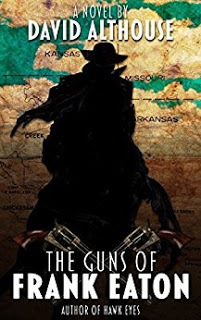 You’ve brought a number of Western authors back into availability in print and e-books. Why do you feel it is important to keep these writers and their books available?
You’ve brought a number of Western authors back into availability in print and e-books. Why do you feel it is important to keep these writers and their books available?I’m not going to try to pull one over on a world class interrogator! I was simply at the right place at the right time. Before we opened Wolfpack, I was having fun with L.J.’s titles, and because of the skinny margins in digital publishing, wasn’t interested in additional authors. But L.J. was determined to open a publishing company and leaned on our friendship to drag me into it. The funny part is. L.J.’s motivation wasn’t money—he simply wanted to help some old friends monetize their backlists.
How have advances in the technical side of publishing been advantageous to Wolfpack?
Desktop publishing and Amazon changed the whole industry. Each new generation of desktop publishing software is more affordable and user friendly. The quality and pricing for print on demand is constantly improving.
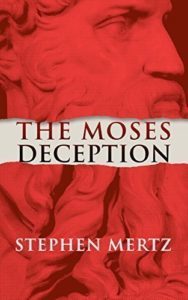 How has Wolfpack exploited the ebook market and is there an average split between the ebook sales and the sales of a paperback for individual titles?
How has Wolfpack exploited the ebook market and is there an average split between the ebook sales and the sales of a paperback for individual titles?Exploited is kind of a big word, officer. All we’ve done is learn how to work with Amazon’s algorithms. The paperbacks were only 12% of our income last year. With our current print on demand solutions, we are at a disadvantage on pricing when competing against mass market books. Fortunately, we think we have a solution in the works that will allow us to become more competitive.
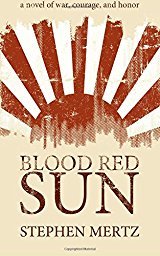 How important is your website and mailing list to the success of Wolfpack?
How important is your website and mailing list to the success of Wolfpack?The websites, mailing lists and our social media platform are all important tools in our tool belt, but pale in comparison to Amazon’s marketing machine.
Wolfpack authors consistently speak highly of how Wolfpack treats writers. How has this come to be part of your reputation?
Thank you. The truth is. it is very rewarding work and the 70 or 80 authors we work with have all become friends.
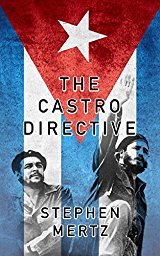 How do you make Amazon work for you and how important are Amazon reviews for Wolfpack titles?
How do you make Amazon work for you and how important are Amazon reviews for Wolfpack titles?Currently, we are Amazon exclusive with our digital books. This makes our titles available to Amazon’s subscription platforms, Unlimited and Prime. Kindle Unlimited readers are the 2nd largest group of digital readers, second only to Amazon, and larger than all the digital readers on the competing platforms combined. In today’s world of fake and easily manipulated news, social proof (reviews) are extremely important.
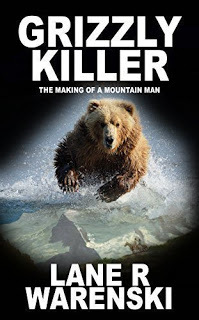 How do you perceive the current status of the Western genre?
How do you perceive the current status of the Western genre?We are extremely bullish on the Western genre. It’s one of the fastest growing genres on Amazon and we’re very proud of the fact Wolfpack Publishing has played a significant role in the new-found popularity of the genre.
Wolfpack has begun expanding into the men’s adventure field. What prompted this decision and what do you look for in a men’s adventure series?
The consolidation of legacy publishing companies left some genres under represented. Westerns are only one example; Men’s Adventure is another. Regardless of genre, we are high on series as they are more cost effective to market.
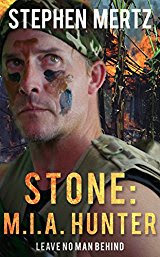
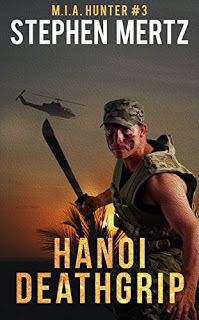 What can we look for in the next few months from Wolfpack Publishing?
What can we look for in the next few months from Wolfpack Publishing?Our focus going into the first quarter is on increasing our return from our existing catalog. You will see more of our titles in libraries and on brick and mortar shelves in the coming months. We are producing audio books as fast as we can find good narrators. We are also in talks regarding foreign rights.
Maybe it’s wishful thinking, but everyone knows westerns are relatively inexpensive movies to produce. With both Netflix and Amazon actively searching for scripts, we are devoting more time presenting our titles to decision makers in the film industry.
What are your future goals for Wolfpack Publishing?
The traditional legacy publishing model doesn’t make sense to me. For example:
Except for the top tier of authors, the author is expected to do the bulk of their own marketing. If I were to talk to someone like Max Evans about click through rates, conversions and retargeting, he’d punch me in the face. The guy is still banging away on a typewriter.
Any eight-year-old with three or four days of lemonade stand experience knows the more times you sell something to someone the easier it gets. Except for Harlequin, the brand isn’t the publisher; it’s the author. After the initial investment in an author, how does a publisher let an author slip away? It sure makes more sense to me to continue investing in an author’s career rather than letting them slip away to the competition and then chasing a new horse.
And why is New York the publishing mecca? We have great strip clubs in Las Vegas. 80% of traditionally published books lose money. Why not reduce that Madison Avenue overhead and invest the savings into authors and marketing their entire catalog?
Our future plan for Wolfpack is to continue filling the void in the softer genres and sub genres the big five publishers don’t think are cost effective to pursue.
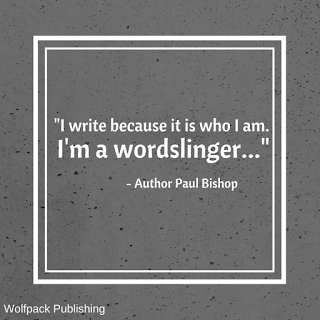 Welcome to Wolfpack Publishing, Paul. I can’t promise you that you’ll earn what you’re worth, but I can promise you that your ride with Wolfpack Publishing won’t be boring.
Welcome to Wolfpack Publishing, Paul. I can’t promise you that you’ll earn what you’re worth, but I can promise you that your ride with Wolfpack Publishing won’t be boring.CHECK OUT WOLFPACK PUBLISHING’S LATEST RELEASE HOT PURSUIT BY PAUL BISHOP
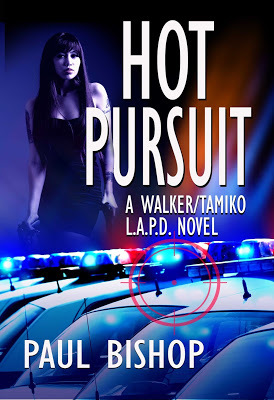
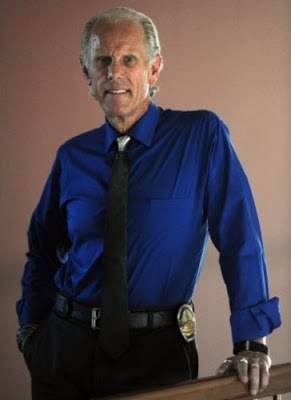 ********Thanks to Mike for sharing so much information and for being a publisher who champions writers...
********Thanks to Mike for sharing so much information and for being a publisher who champions writers...
Published on January 20, 2018 12:21
TROUBLE MAN
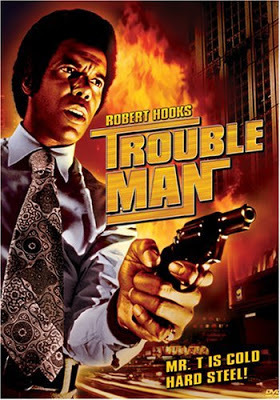
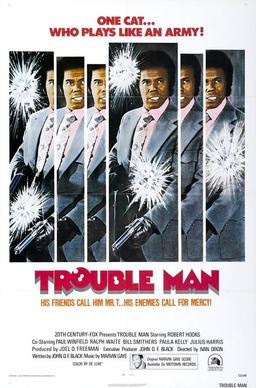 TROUBLE MAN
TROUBLE MANCaught this 1972, Shaft inspired, blaxploitation flick earlier this week when it premiered on TNT. Starring the cool and stylin’ Robert Hooks as a West Coast private eye taking on double crossing mobsters, it was directed by Ivan Dixon (Hogan’s Heroes) with music by Marvin Gaye (call it Isaac Hayes lite).
Leaving out the awful misstep of casting Ralph Waite as a honky crime king, it was very watchable. Production quality was reasonable, Dixon’s direction crisp, and the plot actually made some sense—unlike many films in the gene. It’s definitely derivative and very ‘70s, but worth checking out for Shaft and blaxploitation fans...
Published on January 20, 2018 10:15
January 7, 2018
RIDING THE RANGE WITH BEN BOULDEN
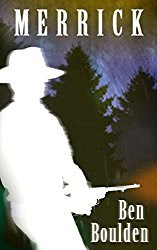
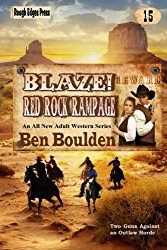 RIDING THE RANGE WITH BEN BOULDEN
RIDING THE RANGE WITH BEN BOULDENBen Boulden is one of the newest wordslingers on the Western scene having written two entries in the current Adult Western series Blaze! and introducing an original Western tough guy in his latest work, Merrick. Ben, however, is no neophyte writer having written over 300 reviews for various literary outlets, conducted numerous interviews for publication, and produces a constant stream of genre related posts on his blog, Gravetapping.
I recently shook out my lasso, tossed it around Ben’s shoulders, and hauled him into the sheriff’s office for a few questions...
********If the Texas Rangers pinned a wanted poster for Ben Boulden on the sheriff’s office wall, what pertinent information would it contain?
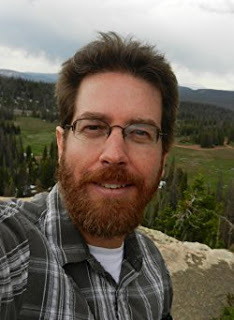 I’ve been told everyone loves to talk about themselves, and I’m no different, but whenever I’m confronted with a request for self-talk, I get a wild look in my eyes, stutter, and basically get scared. So, here are the facts, broad and bare—I live and work in the Salt Lake Valley, in the foothills of Utah’s Wasatch Mountains. I’m a trained accountant and have spent my career as an auditor. I’m married to the finest woman anywhere. We have a beautiful and intelligent daughter. A dog, a one-eyed cat, and a fish. I spend as much time in the mountains and deserts surrounding Salt Lake City as I can and still pay the mortgage.
I’ve been told everyone loves to talk about themselves, and I’m no different, but whenever I’m confronted with a request for self-talk, I get a wild look in my eyes, stutter, and basically get scared. So, here are the facts, broad and bare—I live and work in the Salt Lake Valley, in the foothills of Utah’s Wasatch Mountains. I’m a trained accountant and have spent my career as an auditor. I’m married to the finest woman anywhere. We have a beautiful and intelligent daughter. A dog, a one-eyed cat, and a fish. I spend as much time in the mountains and deserts surrounding Salt Lake City as I can and still pay the mortgage. I write the Short and Sweet: Short Stories Considered column, book reviews and author interviews for Mystery Scene Magazine. Down & Out: The Magazine published my noir crime story, A Calculated Risk, in its most recent issue, but I seem to get more rejections than acceptances.
What was your introduction to Westerns—movies, TV, or books?
My father watched John Wayne films on television during my adolescence, and I have fond memories of movies like Chisum, True Grit, Rooster Cogburn, The Shootist and the most powerful to my pre-teen soul, The Cowboys. And while these films were technically my introduction to the western genre, I didn’t see the artistry of the genre—films and books both—until watching the films with adult eyes and understanding their grand themes. The mad desire to settle the great western deserts, the outsiders place in society, community and religion, greed, love and hate, and the power of faith and hope. The Searchers is a film—based on a novel by Alan Le May—that captures the western story at its best with a deeply flawed protagonist, violence, and an unceasing desire to achieve a seemingly impossible task.
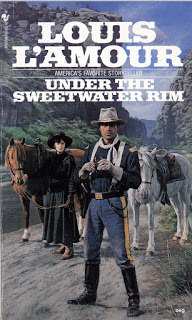 What was the first Western you read?
What was the first Western you read?This question is harder to answer than it should be. The first western writer I read was Louis L’Amour and there is some argument—in my head at least—as to the first novel of his I read. It was either Under the Sweetwater Rim, or Taggart. I do know whichever title I read first, both came from a large box of books in my grandfather’s basement. A box I would very much like to see again.
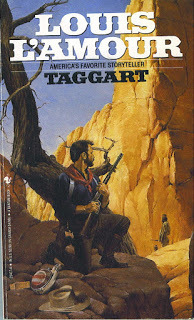 What was it about the genre you found compelling enough for you to want to write a Western?
What was it about the genre you found compelling enough for you to want to write a Western?The landscape of the west has always intrigued me and the seeming madness of the men and women who uprooted their families to make a new future in such a rugged, lonely, and unforgiving place.
How did your long-running Gravetapping blog come into existence, and what is the entomology behind the name?
I started Gravetapping on a whim back in 2006. I wanted to improve my writing and a public forum, even if I was the only reader, would force me to develop as a writer for the simple reason that anyone, anywhere, would be able to see my writing and the idea of producing a poor product—that people could actually read—made me work harder. It made me learn how to write and re-write and re-write again, which is a process I’m still learning and (hopefully) improving every day.
The name is purely made up. When I started Gravetapping, I was in the midst of an extended love affair with horror and the blog was intended to primarily be a place for horror fiction and I thought the name sounded a little Poe-like. My reading tastes strayed away from horror not long after I started the blog, and when I jumped to a new blog with what I thought would have broader name appeal—Dark City Underground—my three readers refused to follow and so I came back to Gravetapping.
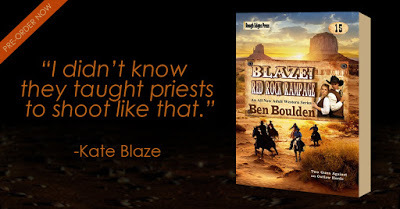 You wrote your debut novel for the Blaze! Western series. How did you get the opportunity and how did you find the experience of writing to novel length?
You wrote your debut novel for the Blaze! Western series. How did you get the opportunity and how did you find the experience of writing to novel length?Everything comes back to Gravetapping, including the opportunity to write my first novel, Blaze! Red Rock Rampage. I had been in contact with Stephen Mertz, the creator of Blaze!, for many years, reviewed several of his novels—which are all absolutely terrific and books everyone should read—and interviewed him at the blog back in the Spring of 2016.
When the interview was completed, Steve asked if I would like to try my hand at writing a Blaze! book. I hesitated for about three minutes, said yes, wrote the first two chapters of RRR, and both Steve and James Reasoner, editor and publisher at Rough Edges Press, told me to keep going. I did, and amazingly it was published. It still feels unreal, and to be honest damn lucky. I love looking at the book sitting on my bookshelf, and even better holding it in my hands.
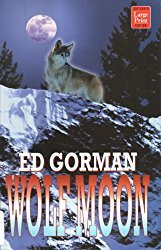 I know you read in many different genres, but do you have one or two favorite Western writers?
I know you read in many different genres, but do you have one or two favorite Western writers?Ed Gorman is my favorite western writer. He wrote western noir, with heavy crime influences, that delve into the human experience while never allowing the story to become stale or boring. His characters are flawed, complicated, and act like people we know and interact with daily. My favorites of Ed’s westerns are: Death Ground, Wolf Moon, Backshot: 1902, Trouble Man, Night of Shadows—I could go on and on.
Ed was a marvelous writer and his work should garner a larger audience than it has. In my thinking, there are a few of his novels people will be reading decades from now for two reasons. The first is the accuracy of his portrait of human suffering and human morality in the late 1900s and early 2000s. The second reason is to admire the near perfect craft Ed used writing his fiction.
I also enjoy the westerns Elmore Leonard wrote at the beginning of his career with their lean dialogue, clean style, and hard plots. For all of Leonard’s success as a crime writer, I think his westerns are his best work. H. A. DeRosso wrote some of most brutal western short stories I’ve read, and his use of landscape—particularly in his Shadowlands tales—is as good as anything out there. Brian Garfield is another favorite, as is Harry Whittington, Louis L’Amour, and Donald Hamilton. I’m probably missing several others, but…
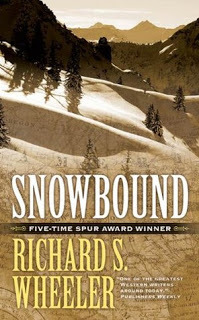 Do you read any current Western wordslingers?
Do you read any current Western wordslingers?My reading of current Western writers is more limited than it should be. I review mystery, crime and suspense novels and short stories for Mystery Scene Magazine and that commitment takes a significant amount of my reading time. But, I very much enjoy reading Richard S. Wheeler’s work, especially his biographical novels—An Obituary for Major Reno and Snowbound are two favorites—along with his mining town novels. Although, due to age and health issues, it’s my understanding Mr. Wheeler is no longer writing.
I also enjoy, and have recently read, Johnny D. Boggs, Brent Towns (who writes under a few pseudonyms), James Reasoner (the most prolific and highest quality writer whose name most readers are unfamiliar with, but have probably read), Loren D. Estleman, and Max McCoy.
How do you perceive the current status of the Western genre?
This question, for me, has two distinct elements. The first is the quality and vitality of the work being produced in the genre, which I think is very high. There are a number of writers—see the names I’ve listed above, along with a bunch of other writers like Joseph A. West and Dusty Richards—that are producing work at high levels. The Westerns being written today are as good or better than they have ever been.
The second element is the genre’s commercial vitality, which is a poor reflection of the superb stories being written. Ebooks have provided a bump and a new market for the genre and its writers, which is a great thing, but from my view it hasn’t been enough to keep the genre healthy long-term. Publishers need to figure out how to market Western novels to a larger audience than is currently purchasing and reading the stories or the best writers will move into other genres—crime, thriller, etc.—where there is a higher potential for financial gain.
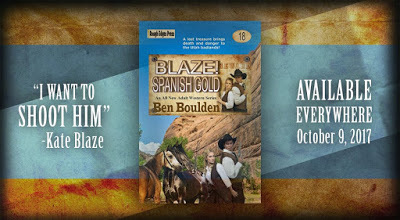 Do you have a writing mentor?
Do you have a writing mentor?I’ve been lucky. I’ve had two mentors—Ed Gorman and Stephen Mertz. Ed introduced me to the idea I could write. He helped me break into the pages of Mystery Scene Magazine as a critic and allowed me to write an Introduction for an omnibus of his private eye novels, The Autumn Dead and The Night Remembers, published by Stark House. Ed passed away in October 2016, and for a guy I never met in person, I miss his presence in my life more than I can say. And my mentioning him here would keep Ed embarrassed for weeks.
And Steve Mertz has been a guide for me as I’ve tried to figure out what I want to write, how I want to write, and how I should write. His generosity and patience, and cool optimism, are remarkable and very much appreciated. Not to mention, he used his influence to help me get those two Blaze! contracts.
When you start writing a new Western, do you pick a standard Western plot (I think there are about six) and look for a way to turn it on its head, or do you look to history or some other source for inspiration?
I start with the characters and the story’s place. The place for me, in this context, is more about landscape and its impact on the characters than it is about the broader implication of setting. The rising red rock country of Southern Utah. The high, rugged and unforgiving mountain landscapes. These locations or landscapes impact the characters in how they survive and see the world, as well as the type of story or plot that would fit that landscape and (ultimately) setting.
I tend to see the characters, at first, in snippets. A man walking down a boardwalk, his steps echoing across a deserted street. Then I ask a few questions. Who is he? Where is he? What is he doing? The answers develop both the character and place, which I then use to build the story or plot frame by frame.
An example of this is my story, Merrick. The genesis was an image of a man riding a paint hard across a gray stained alkaline desert. Smoky pale dust in a line behind him. Once I determined where he was—Utah’s West desert—and who he was—an outlaw—the story developed for me.
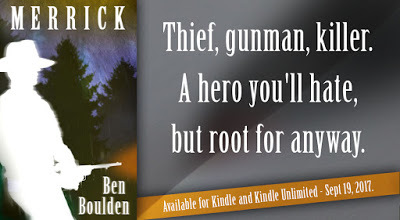 In your latest Western, you’ve introduced a new character, Merrick, into the Wild West. What was the genesis of the character and where do you see him riding the range in the future?
In your latest Western, you’ve introduced a new character, Merrick, into the Wild West. What was the genesis of the character and where do you see him riding the range in the future?Merrick is the sort of guy who gets things done. While he is an outlaw, he has high personal ethics and a sense of right and wrong—you take only what is yours, you never betray your partners, and you kill only when necessary. He lives and works in the closed environment of 1890s Utah, when the Mormon Church held almost absolute power over the region, and there exists (purely fictional on my part) an organized crime syndicate called The Elders. The syndicate controls the crime across most of the territory. Merrick is an outsider, non-Mormon, and an independent operator who roams the desert southwest looking for his next job.
I have big plans for Merrick as a character. I’m working on a novel now, which is mostly plotted and a handful of scenes written, with its action a direct result of what happens in the currently available story, Merrick. We’ll see what happens, but I hope something good comes from Merrick’s criminal ways.
********Thx to Ben for stepping down from the saddle and sitting around the campfire with me. I’m definitely looking forward to the next six-gun adventure from his blazing typewriter...
TO VISIT BEN’S BLOG CLICK HERE
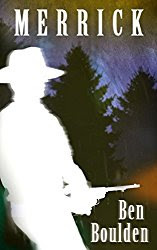 MERRICK Merrick is hard, tough, and when he needs to be, mean as hell. When Merrick is called in as a late-replacement for a payroll heist his first inclination is greed. His second is hesitation, since anyone who says a job will be easy is a liar, but this job has been planned by an old partner, Clarence Tilley, who has masterminded more than a few successful heists...It’s a four man job with a payout worth $15,000, and Merrick’s share would keep him in whiskey and satin for a year. But it may also get him killed...
MERRICK Merrick is hard, tough, and when he needs to be, mean as hell. When Merrick is called in as a late-replacement for a payroll heist his first inclination is greed. His second is hesitation, since anyone who says a job will be easy is a liar, but this job has been planned by an old partner, Clarence Tilley, who has masterminded more than a few successful heists...It’s a four man job with a payout worth $15,000, and Merrick’s share would keep him in whiskey and satin for a year. But it may also get him killed...
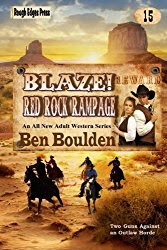 BLAZE! #15: RED ROCK RAMPAGE J.D. and Kate Blaze ride into the settlement of Small Basin, Utah, on the trail of train robbers but soon discover that the town and the surrounding area are ruled by the iron fist of a renegade Mormon patriarch—and he has his eye on two beautiful young women he intends to make unwilling brides. Hired killers, corrupt lawmen, and brutal kidnappers mean a heap of trouble for the Old West's only husband-and-wife gunfighters. Forced to split up, Kate and J.D. have to battle their way back to each other to survive…Red Rock Rampage is another fast-action gem in the Blaze! series, full of intriguing characters, gritty violence, and vividly realized settings...
BLAZE! #15: RED ROCK RAMPAGE J.D. and Kate Blaze ride into the settlement of Small Basin, Utah, on the trail of train robbers but soon discover that the town and the surrounding area are ruled by the iron fist of a renegade Mormon patriarch—and he has his eye on two beautiful young women he intends to make unwilling brides. Hired killers, corrupt lawmen, and brutal kidnappers mean a heap of trouble for the Old West's only husband-and-wife gunfighters. Forced to split up, Kate and J.D. have to battle their way back to each other to survive…Red Rock Rampage is another fast-action gem in the Blaze! series, full of intriguing characters, gritty violence, and vividly realized settings...
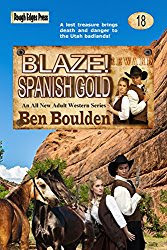 BLAZE! #18: SPANISH GOLD The only thing Kate and J.D. Blaze had in mind when they rode into the settlement of Unity, Utah, was celebrating their wedding anniversary. But then J.D. is forced to kill a corrupt deputy in order to save a woman’s life, and suddenly the Old West’s only husband-and-wife gunfighters are plunged into a deadly mystery involving a sinister albino, missing men, and a lost treasure in Spanish gold…It’s action all the way as critically acclaimed author Ben Boulden returns with another exciting installment in today’s top Western series...
BLAZE! #18: SPANISH GOLD The only thing Kate and J.D. Blaze had in mind when they rode into the settlement of Unity, Utah, was celebrating their wedding anniversary. But then J.D. is forced to kill a corrupt deputy in order to save a woman’s life, and suddenly the Old West’s only husband-and-wife gunfighters are plunged into a deadly mystery involving a sinister albino, missing men, and a lost treasure in Spanish gold…It’s action all the way as critically acclaimed author Ben Boulden returns with another exciting installment in today’s top Western series...
Published on January 07, 2018 22:33
January 4, 2018
AND THEN…
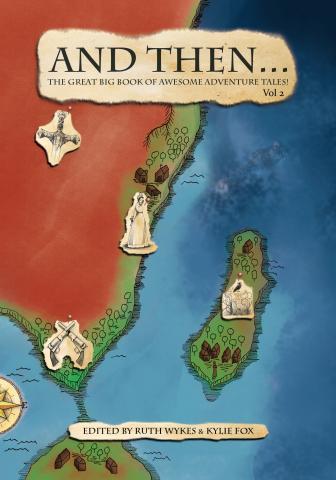 AND THEN…THE GREAT BIG BOOK OFAWESOME ADVENTURE TALESVOLUME 2
AND THEN…THE GREAT BIG BOOK OFAWESOME ADVENTURE TALESVOLUME 2I’ve been fortunate to have an advanced look at the first big release of 2018—And Then...The Great Big Book of Awesome Adventure Tales Volume 2. I enjoyed the first volume of this compendium of Aussie/Kiwi tinged adventure stories, but this time around I have three dogs in the fight. Among these tales, from some of the best Down Under authors, are entries from my good friends and pulp mavens James Hopwood (aka: David Foster) and Andrew Nette, along with Kerry Greenwood, whose Phryne Fisher mysteries are among my favorites. This one is well worth your attention...
Thirteen boundary-defying, genre-bending, adrenaline-charged stories of intrigue, bravery, mystery and peril by fifteen Australian genre writers. Once upon a time, in an inspired fit of lunacy, Clan Destine Pressinvited some of the best genre writers in Australia and New Zealand to join us in a grand adventure.
The challenge was to write cliff-hanging, action-packed adventure stories starting from a premise of What If, What Now, or And Then…The request was for rollicking stories of cliff-hanging quests or mysteries, page-turning deeds and escapades, with two heroes, set in any time or place, but with a touch of something Aussie or Kiwi.
The stunning response was enough stories for two volumes and a must-read anthology of tales, which will transport you to worlds both familiar and fantastic. As stated in the Introduction, “Some of these visions are dark indeed, but And Then…remains a wondrously strange collection of exotic and exciting tales encompassing a huge sweep of possibilities—past, present and future. Enjoy!”
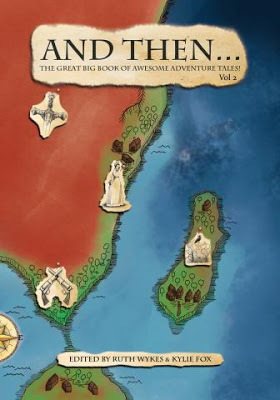 AND THEN…THE GREAT BIG BOOK OFAWESOME ADVENTURE TALESVOLUME 2
AND THEN…THE GREAT BIG BOOK OFAWESOME ADVENTURE TALESVOLUME 2Once upon a time, in a land Down Under, from the depths of the Clan cave, Clan Destine Press issued a challenge to Australian and Kiwi authors to write cliff-hanging, Australian-flavored, action-packed adventure stories for two protagonists; stories of the What If, What Now, And Then... kind. This was a catnip call, an irresistible lure, a kid-in-a-candy-store kind of a challenge: what writer wouldn’t want to take a crack at that?
To make it that little bit more intriguing, the editors decreed the stories could be contemporary, historical, realistic, far-out, spec-fic, horror, SF, or urban fantasy; and, in a spirit of mischief, that at least one of the two protagonists must be human. You'd think that would cover all bases.
But writers are a contrary bunch: they pushed these very broad boundaries even further. The result is not one, but two volumes of kick-arse, action-packed stories: And Then... The Great Big Book of Adventure Tales.
Volume 2 is another fascinating collection of genre-bending adventure stories garnered from a mix of sf, fantasy and crime writers, happily encroaching upon each other's territories, and then some.
~ FEATURING ~Janeen Webb Introduction Alison Goodman A High Possibility of Peril Andrew Nette Save a Last Kiss for Satan Cameron Ashley Dogs Leave Home to Die Fin J. Ross Genemesis Mary Borsellino The Australian Gang Kerry Greenwood / David Greagg Cruel Sister Kelly Gardiner Boots and the Bushranger Amanda Pillar It Michael Pryor Cross Purposes James Hopwood The Lost Loot of Lima Sarah Evans Plumbing the Depths Jack Dann / Steven Paulsen Harold the Hero and the Talking Sword Maria Lewis The Bushwalker Butcher
Edited by Ruth Wykes and Kylie Fox, with title-page illustrations by Vicky Pratt and cover art by Sarah Pain, AND THEN... VOL 2 is now available as an eBook direct from Clan Destine Press ( CLICK HERE ) or from Amazon and iTunes.
AND THEN... VOL 2 the paperback is available for a special pre-order savings of 24% off the regular price ( CLICK HERE ). The book will be released in mid-February.
Published on January 04, 2018 09:27
January 2, 2018
COWPOKE CRITIC
 COWPOKE CRITIC EVERYONE’S FAVORITE REVIEWER OF WESTERNS, STEVE MYALL, SPEAKS OUT
COWPOKE CRITIC EVERYONE’S FAVORITE REVIEWER OF WESTERNS, STEVE MYALL, SPEAKS OUT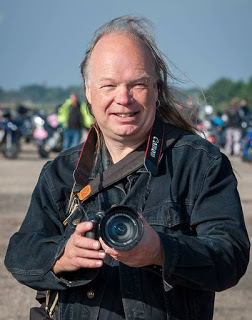 Steve Myall is my go to source for all things in the Western genre. His Western Fiction Reviewblog covers the best current and old school Western novels as well as in-depth interviews with Western wordslingers and Western cover artists. There are many Western blogs and websites on the Internet, but Steve’s Western Fiction Review would be my choice if I could only have access to one from the dial-up Internet feed on the proverbial desert island. Steve has stepped out of the saddle and sat down around the campfire with me to share his thoughts on the Western genre...
Steve Myall is my go to source for all things in the Western genre. His Western Fiction Reviewblog covers the best current and old school Western novels as well as in-depth interviews with Western wordslingers and Western cover artists. There are many Western blogs and websites on the Internet, but Steve’s Western Fiction Review would be my choice if I could only have access to one from the dial-up Internet feed on the proverbial desert island. Steve has stepped out of the saddle and sat down around the campfire with me to share his thoughts on the Western genre...********What pertinent information would a Wild West Wanted poster for Steve Myall contain?
Steve Myall, an Englishman who often uses the alias Steve M. Mostly seen in Nottinghamshire, England. Often armed with a camera to shoot strangers. Reward—reviews.
You are obviously a huge fan of Westerns. What is it about the genre that makes you such a fan?
The American landscape is so different to the UK, and to survive in what could be such a harsh environment due to natural phenomena, or from mankind, is a challenge that captured my imagination, along with the clash of cultures. Watching Spaghetti Westerns, with their stylized violence overlaid by their strange and haunting soundtracks, also struck a chord in me. I became well and truly hooked.
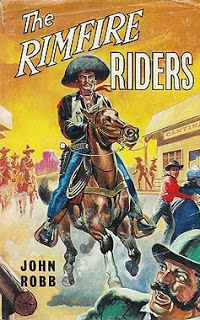 What is the first Western you remember reading?
What is the first Western you remember reading?It was a small hardback book published by The Children’s Press (London & Glasgow) called The Rimfire Riders by John Robb. It’s starred a character called Catsfoot, and I eventually got the other two books in which he appeared.
What was the first Western series you began collecting?
Edge by George G. Gilman began my obsession with collecting paperback Westerns. Whilst waiting for new Edge books to be published, I started buying all the other UK series from a group of writers later known as the Piccadilly Cowboys.
 How many Westerns are currently in your collection, and where do you keep them?
How many Westerns are currently in your collection, and where do you keep them?I have no idea as to the number, a wild guess would be around five thousand series paperbacks. Two to three hundred standalones. Five to six hundred Black Horse Westerns. Plus other hardbacks and e-books. I have a few pulp mags too.
I have custom made bookshelves for paperbacks in three rooms. There are a few stacks of books in my man-cave. The others are all stored in boxes in the loft (attic). I am seriously starting to think about selling some, but it’ll be a heart-wrenching decision to make.
 You have stated your preference for Western series over standalones. Why?
You have stated your preference for Western series over standalones. Why?Because I like to see what happens next. I also enjoy how some authors continue storylines over several books.
In 2018, your Western Fiction Review blog will celebrate its 10th anniversary. What prompted you to start the blog and what has kept you posting quality interviews and reviews?
A couple of years before starting WFR, I’d found a long gone western chat board on the Internet and came into contact with James Reasoner. I mentioned I liked the Wildernessseries and The Trailsman. James told me the author of the Wilderness books—David Robbins—also wrote for The Trailsman series. He then directed me to Robbins’ Yahoo chat group. David and the group members encouraged me to post mini review of the westerns I read on their board. These were only a few lines long. David suggested I start posting them on a blog, which was how WFR began.
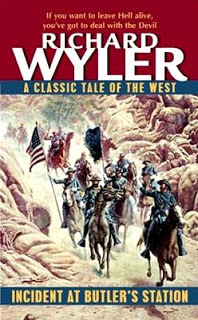 Your FIRST BLOG POST in July 2008, was for the 1967 novel, Incident at Butler’s Station by Richard Wyler—a pseudonym for icon English Western wordslinger, Mike Linaker. Was there a specific reason you chose to start the blog with this post?
Your FIRST BLOG POST in July 2008, was for the 1967 novel, Incident at Butler’s Station by Richard Wyler—a pseudonym for icon English Western wordslinger, Mike Linaker. Was there a specific reason you chose to start the blog with this post?I’d always enjoyed Mike Linaker’s work and seem to remember I’d not long read the book in question. I wanted my first post to be a tough, action packed western without too much graphic violence or any explicit sex, so the review would appeal to all western fans, and this book fitted that requirement perfectly.
You posted an INTERVIEW with Mike Linaker in 2009 as well as a number of REVIEWS of his books under his many pseudonyms. Do you consider Linaker a major influential name in the Western genre and, if so, why?
Mike wrote the Bodie the Stalker series (as Neil Hunter), which came out at the same time as the other Western series I was reading by English authors. His series was one of those that hooked me early on, and he was the only UK author from those days I could easily track down. The fact he is still writing today, having new and republished work put out by Piccadilly Publishing, shows he still has great appeal.
What do you feel is the legacy of the Piccadilly Cowboys?
The fact they brought a new style to a static if not stagnant genre and grabbed a whole load of new fans to the western. A style that still draws in new readers and sees them the subject of many conversations today, so in some ways they can be seen as a group of writers that perhaps saved the western from slipping into obscurity, at least in the UK anyway.
Do the Adult Western series have the same type of legacy?
I’m guessing you mean the westerns tagged adult in America and are referring to explicit sex? From what I’ve read in other people’s comments then the answer would be yes. It has been said by many that the adult westerns gave a new lease of life to the American western at the end of the seventies and in the early eighties. They must have had something going for them as the four longest running American western series came from that era, and they would have long since faded away if there wasn’t a market for them.
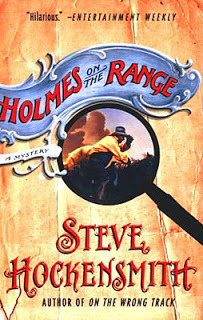 Among the many Western wordslingers you’ve interviewed, are there any who stand out?
Among the many Western wordslingers you’ve interviewed, are there any who stand out?They’ve all given fascinating insights into their trade. I’m just grateful everyone I’ve asked said, yes. The odd comment has stood out, and one or two ways of answering the questions I put to them that gives a different feel to the interview. Check out my interview with STEVE HOCKENSMITH to see what I mean.
The great majority of your reviews are positive. No doubt this is an appropriate choice not happenstance. However, I’m sure you come across Western novels of inferior quality (we’ve all come across them—unfortunately too often). Do you always finish poorly written Westerns or do you toss them aside unfinished and move on?
Right from the beginning I’ve wanted the blog to have a positive approach. I want to bring readers to the genre not turn them away. Yes, I do come across books that are inferior quality or not to my taste, so I just stop reading them and pick up something else. That way I don’t have to post negative reviews.
Can you name a couple of your favorite Western series and tell us what it is about them that puts them high on your list?
There are so many and I feel to choose one or two over others wouldn’t be fair. Reasons for why they’d be my favourites would be the time period, the author(s) behind the series, or the main character(s) have more appeal to me than others.
What are your favorite Western related blogs or websites to visit?
These days its more groups on Facebook and through these I’ll find myself looking at specific posts on blogs or websites rather than going regularly to particular sites. With Facebook all the posts from various groups/pages appear on my timeline, so I don’t have to do too much hunting to find out what’s going on. Lazy perhaps but time saving.
Who are the Western writers you recommend most often?
It all depends on who I’m recommending them too. If someone likes the mountain man era, then I’d suggest authors who write those types of book. These would probably be different authors to those I’d suggest to a reader who likes fiction featuring real events and people from the history of the West. They might not like books containing explicit violence or sex, so it’d be know good before pointing them toward writers whose work features graphic content. I think there are authors who have a broad appeal who I could recommend to almost all fans of the western, but I don’t want to name names in case I forget someone I really should include.
Is there one Western novel you find yourself returning to again and again?
With the amount of books waiting in my many to be read piles, I don’t have time to re-read books unless I’m specifically asked to review it.
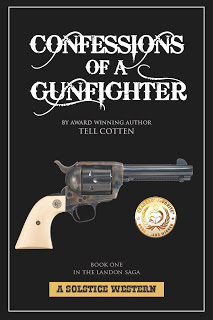 Who is the one little known Western writer you would recommend Western fans read right now?
Who is the one little known Western writer you would recommend Western fans read right now?TELL COTTEN . His LANDON SAGA is a must read for me.
Do you feel the advent of e-books has had a positive or negative effect on the Western genre?
Both. With most major publishers dropping the western genre, the e-book has stepped in to help keep it alive. Unfortunately, anyone can put out an e-book. This means there are a lot of poorly written e-book Westerns, which does have a negative effect.
How do you judge the current state of the Western genre?
Ticking over nicely. Including the explosion of e-publishing, there are far too many new Westerns for me, or any other Western fan, to keep pace. This has to be good for the genre. I just wish a bit more thought was put into cover art, as the same image or type of image keeps turning up again and again.
Have you written, or have plans to write your own contribution to the Western genre, or does the ongoing valuable contribution your blog provides to the genre keep you more than busy?
I’ve never had any aspirations to write my own stories. If I did anything, it would more than likely be to produce images to offer as cover art, but I really don’t have enough hours in the day to pursue that idea at the moment. Reading and writing reviews, along with a couple of other hobbies, takes up all my time.
Do you have anything special planned for the 10th anniversary of Western Fiction Review?
Nothing special planned at the moment, but it is in my mind.
********Thx to Steve not only for taking the time to share a tin cup of strong coffee around the campfire, but for all the effort and information he has provided over the years via Western Fiction Review.
TO VISIT WESTERN FICTION REVIEW CLICK HERE
Published on January 02, 2018 22:32
January 1, 2018
THE GREATEST SHOWMAN
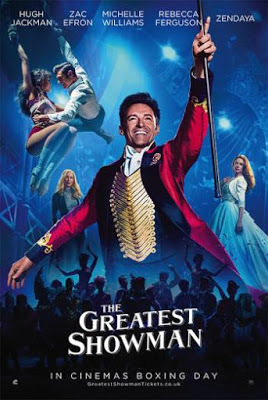
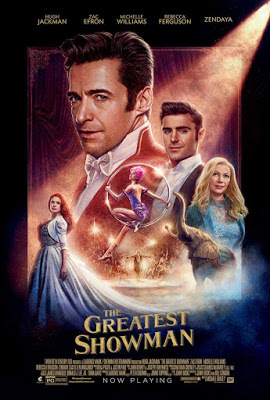 THE GREATEST SHOWMAN
THE GREATEST SHOWMANIf P.T. Barnum did say, “There’s a sucker born every minute,” he may have been right, because I am a huge sucker for this movie. The Greatest Showman is only superficially about Barnum the man. Instead, it is about the wonder of the fantasy Barnum’s spectacle unrepentantly represented. It is a glorious explosion of singing and dancing, cinematography, romance, and scarves and laundered sheets fluttering perfectly in the wind. The music and the style of dancing may be anachronistic to the time period, but who cares—its purpose is to move modern audiences with the same elation Barnum brought to the audiences of his day. The songs are toe tapping, upbeat, and dazzling from opening bang to big finale.
The Greatest Showmanspends no time agonizing over the realities of Barnum’s methods, or the treatment of animals, or mid-way con artists, or any of the politically correct hindsight we use to guilt those of whom we do not approve today. But those things are part of another movie, one I would not have paid to see. I paid to be caught up in the promised joy of the fantasy world so brilliantly created by this spectacle of an experience. It is what the film Moulin Rouge failed to be because this film ultimately has warmth and heart and, most importantly—joy.
While The Greatest Showman does—unavoidably—have a politically correct message about diversity and acceptance, it is far more about vision, belief, and friendship. It also has something else very special, Hugh Jackman—the ringmaster who never slows, and effortlessly makes us all part of the fantasy. Zac Efron holds his own as Jackman’s second in command, and the cast of characters led by Lettie Lutz The Bearded Lady (Keala Settle) and Tom Thumb (Sam Humphrey) embrace their spectacular performances with everything they have to give.
Yeah, yeah, the critics on Rotten Tomatoes gave The Greatest Showman a dismal rating of 55. The audience on Rotten Tomatoes, however, gave the film a rousing rating of 90. So, who are you going to believe—the snobs or those audience members who actually paid for their tickets and popcorn and had a terrific time? As for me, the first thing I said after the closing credits was, “I’ve got to see this again.”
*Fair warning. The above is my opinion of what I feel is a wonderful film. Your mileage may vary. Having agreed to that point, any obnoxious comments left below will be deleted.
Published on January 01, 2018 19:51
December 24, 2017
SURVIVING THE STREETS—A CONVERSATION WITH W. HOCK HOCHHEIM
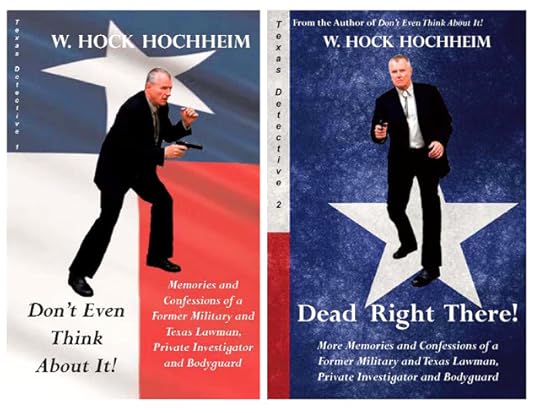 SURVIVING THE STREETSA CONVERSATION WITH W. HOCK HOCHHEIM
SURVIVING THE STREETSA CONVERSATION WITH W. HOCK HOCHHEIMW. Hock Hochheim is a former U.S. Army investigator and 22 year veteran Texas police investigator, patrol officer, former private investigator and bodyguard, and award winning author. He currently owns and operates Force Necessary, an international combatives training company. He conducts more than forty seminars a year in eleven allied countries relating to combat techniques and strategies. The founder of the Scientific Fighting Congress, he is considered a world authority on self-defense techniques. The author of ten non-fiction books, four novels, and countless articles on policing, the military, street survival, close quarter combat, and conflict psychology, he lives in Texas.
In the autobiographical Don’t Even Think About It : Memories and Confessions of a Former Military and Texas Lawman, Private Investigator and Body Guard, Hochheim shared the details of his life investigating crime. Escaping New York City on a motorcycle, he headed west, planning to catch a freighter to Australia. Instead, he found himself in Texas dodging bullets and tracking down criminals—first as a security guard, then in Asia working for Uncle Sam as a military policeman and investigator.
Hochheim next parlayed his military law enforcement experience into a civilian career as a Texas patrol officer and detective. During his three decades in law enforcement, he investigated more than 1,000 crimes and arrested uncountable suspects—including a killer who carved off his victim’s faces, and the murderer of a local college professor.
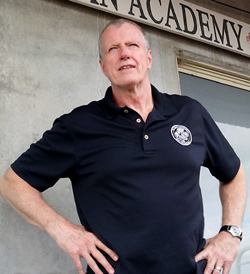 A graduate from numerous, national Assault and Violent Death police schools and street survival courses, Hochheim also studied martial arts and hand, stick, knife and gun combatives, earning numerous black belts in multiple systems. His unique skill set placed him in a clique of elite warriors. After retiring from sworn law enforcement, he applied these skills to become a highly sought after private security expert. Organizing protection and security details for famous authors, politicians, musicians, as well as TV and movie stars, he also produced more than 250 self-defense DVDs.
A graduate from numerous, national Assault and Violent Death police schools and street survival courses, Hochheim also studied martial arts and hand, stick, knife and gun combatives, earning numerous black belts in multiple systems. His unique skill set placed him in a clique of elite warriors. After retiring from sworn law enforcement, he applied these skills to become a highly sought after private security expert. Organizing protection and security details for famous authors, politicians, musicians, as well as TV and movie stars, he also produced more than 250 self-defense DVDs. As an instructor, he works hard to pass on his knowledge to a new generation of warriors to protect themselves and others on the urban streets and rural byways where debased crime proliferates and death is often only a whisper away.
I was fortunate to grab some time with Hock to up him under the bright lights of the interrogation room and get him to squeal on his latest writing endeavors...
********If you were to go rogue and Interpol was foolish enough to issue a most wanted BOLO, what pertinent information would be on it?
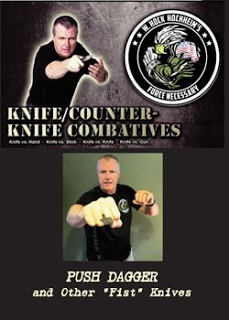 Calling all cars! Calling all cars! Be on the look-out for W. Hock Hochheim! Grew up in New Your City area and became an illegal immigrant in Texas in 1972. Finally granted Texican citizenship after an Apache initiation. Be advised. Former Army patrolmen, Former Army investigator. Former Texas patrol office. Former Texas detective. Has several black belts in martial arts. Once described himself as a first and foremost a writer, second a detective, third a martialist. In that order. Since retirement, travels the world (11 countries)—like Cain in Kung Fu—teaching hand, stick, knife and gun combatives, but would prefer being a hermit and writing westerns, with an occasional crime thriller and how-to-fight book.
Calling all cars! Calling all cars! Be on the look-out for W. Hock Hochheim! Grew up in New Your City area and became an illegal immigrant in Texas in 1972. Finally granted Texican citizenship after an Apache initiation. Be advised. Former Army patrolmen, Former Army investigator. Former Texas patrol office. Former Texas detective. Has several black belts in martial arts. Once described himself as a first and foremost a writer, second a detective, third a martialist. In that order. Since retirement, travels the world (11 countries)—like Cain in Kung Fu—teaching hand, stick, knife and gun combatives, but would prefer being a hermit and writing westerns, with an occasional crime thriller and how-to-fight book.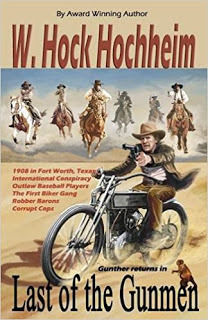 When did you first consciously begin to develop the skills of a storyteller?
When did you first consciously begin to develop the skills of a storyteller?As a kid, as I was fascinated with comics and books—and covers!—both hardcover and paperback. I began to draw and write in the ‘60s, in what is now called graphic novels—a combination of illustrations and words. In my case, while they played off each other, they also took from each other. I noticed that in phases of time, the art was fantastic and the words seemed to suffer, and vice versa. It seemed I had only enough energy for one...I created western stories back then for some unknown reason, as I was interested in all genres. I majored in art and was bound for art college in New York City, but instead, climbed on a motorcycle and took off for points unknown.
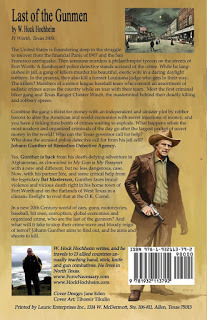 You have written a diverse mix of non-fiction and fiction. Is your approach to each different or the same?
You have written a diverse mix of non-fiction and fiction. Is your approach to each different or the same?If there is a singular approach, it is to be different. Not follow the mainstream. Say, in terms of a western, the cattle man vs the sheep man formulas. The land grabber vs the settlers. My western character Gunther is set in the early 1900s, which is already different. He is reading HG Wells and Freud. This has not endeared me to classic western readers, but it’s still rather classic—with a twist. In Last of the Gunmen, Gunther is up against a minor league baseball team whose players commit robberies when they are playing away games—taking church money being sent to the Pope. Not exactly a classic saloon showdown.
In Blood Rust, our hero was an NYPD detective. I lovegood NYPD detective stories when the style is just right. I wanted to capture that motif, but not in the usual way. Enter Rusty who, after being shot in the head in an ambush, becomes a New Jersey criminal—he’s a psycho, until he finds out he convicted the wrong man for murder. Something goes…BOOM…in his head. Crazy Rusty has become a popular character and, with any luck, I can write the next one in a few years. But the approach is recognizably the same—but different.
When writing your books specific to tactics and strategies of self-defense, how do you separate yourself from the other books on the subject?
The how-to textbooks are very rote, step by step, unless there is a support essay, in which a bit of personality may appear. Fightin’ Words: The Psychology and Physicality of Fighting book is full of personal, flavorful essays on fighting subjects. In my novels, all this fighting stuff manifests in the action and fight scenes, which I am happy to say readers like. I try to put people in the driver’s seat. In terms of writing, the fighting becomes checkers not chess. The sentences are structured to be quick and personal, matching the speed of the fight whenever possible. Violent poetry.
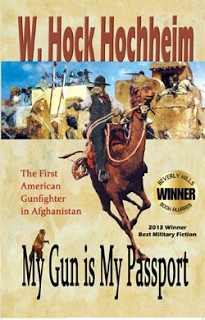 How is what you teach in seminars different and how did you develop your tactics?
How is what you teach in seminars different and how did you develop your tactics?I started doing Ed Parker Kenpo Karate in 1972—I was not a kid, which will tell you how old I am—right before I joined the Army. I have never stopped studying various martial arts since. I messed with them from a police and military perspective, so, I realized arts and their dogmas were not perfect fits. I studied many different arts, always looking for the next best thing. I discovered there was no next best thing. Soooo, I decided to create the next best thing—The essence of hand, stick, knife and gun.
What are the most common self-defense misconceptions you run up against?
That size doesn’t matter—It does matter...it’s why God made weight levels in combat sports. That being alert is the key to safety. You can be as alert as a skittish fawn, but then you may well have to fight. How much gas (endurance) and how much dynamite (explosive power) and savvy (fighting time and grade) do you have. It’s great you were alert to a bad guy approaching, but how long will you remain alertwhen he is mashing your face in? Another misconception is a knife or gun solves everything. People have to draw these weapon under stress—with almost no practiced—and often it is morally, ethically, and illegal to shoot or stab some based on the situation. That’s just three. It’s a lengthy list.
What prompted you to turn your hand to fiction and the slam-bang action tales of adventurer Johann Gunther?
Serial characters make the world go round, whether you are a child reading Dick, Jane and Spot, a teen reading Harry Potter, or adults reading and watching Harry Bosch or Batman. People fall in love with serial characters. We like to stick with good characters, especially when they age. I wanted to take a shot at that concept. Gunther exists in a time gap between the western gun fighter of the 1890s, and the Sam Spades of 1920s. He is a mix of both.
Did you have a specific real life of fictional character who provided the inspiration for Johann Gunther?
Looks-wise, since Gunther is an immigrant German, I imagine him to look like the actor Rutger Hauer, when he was in his ‘30s and ‘40s. Gunther is a highly realistic, fully-fleshed out version of the old Paladin, from the 1950s TV show Have Gun, Will Travel, which was a sophisticated show in its day, but not by modern complex standards. We learn how Gunther wound up in the US, the Army, the stint as a deputy in Paris, Texas, his appointment to West Point, etc. So, he is a mix of various fiction models, but different. My first fictional character was Jumpin’ Jack Kellog, a Houston area police detective, who is a mix of several real Texas detectives I worked with and knew. Ol’ Rusty, of Blood Rust, is not anyone really—just a red-headed, crazy guy, who can’t think straight and solves his problems and the crime with half psychopathic measures.
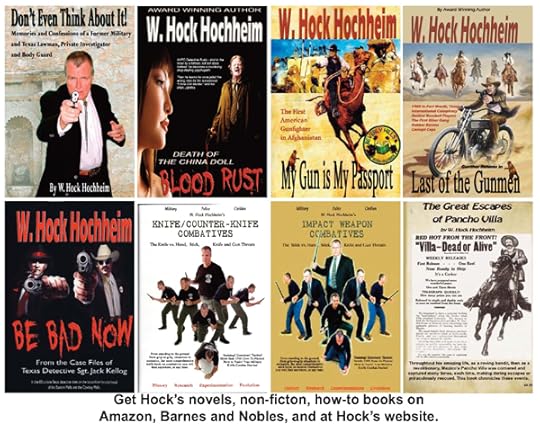 Have you found anything in the psychology or practice of martial arts that has application to the writing process?
Have you found anything in the psychology or practice of martial arts that has application to the writing process?In the arts end of martial arts, they try to develop various qualities of perseverance and—if you think about it—the good qualities of a bring a better person. For me, sitting down to write is a torturous process with rare flashes of rewards. I guess these martial arts qualities help keep me in the chair through the torture.
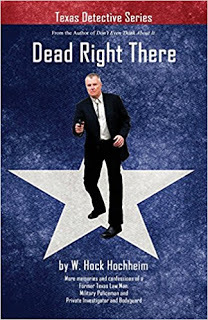 Your new book, Dead Right There: More Memories and Confessions of a Former Military and Texas Lawman, Private Investigator, and Bodyguard, is a sequel to your first collection of real life cases in which you were involved—Don't Even Think About It. What prompted you to share more of your experiences?
Your new book, Dead Right There: More Memories and Confessions of a Former Military and Texas Lawman, Private Investigator, and Bodyguard, is a sequel to your first collection of real life cases in which you were involved—Don't Even Think About It. What prompted you to share more of your experiences?In the 1980s, while I was a police detective, my father-in-law was visiting. He was reading a non-fiction, book written by an insurance investigator. He loved it., claiming, “These stories are great. Interesting.”
I looked the book over. Jeez, it was the most boring cases. People like this? I mean, a few days before I cleared a murder and we were shot at trying to arrest the guy, but people were mesmerized by the simple fraud stories in the book. Really?
I thought about this. People like true action. They also like true procedurals. Everyone loved the stories I told them. I was very lucky to have been a detective in the Army and in Texas for about 18 years. It was a very interesting time and place in Texas and law enforcement history. A lot of things happened, killings, robberies, rapes, and it was the era of lone-wolf-detective. You got your cases, or went to the crime scene when on call, and you worked them hard—by yourself. Occasionally, you could ask your close-friend detectives for help. It wasn’t just detective stories, people also liked to hear patrol stories.
I always felt the urge to write, and had been doing it on the side. I was the editor of the international Close Quarter Combat Magazine, and had many articles published, as well as a history book on Pancho Villa, and a police novel, Be Bad Now. However, it was about 2002, when I began writing down these true police stories. It’s a long, back story.
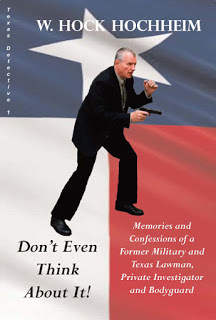 I collected the stories and composed quite a hefty book called, Don’t Even Think About It, a line I used a lot when arresting people and predicting they were going to resist arrest in some way. I think I heard Randolph Scott say it in a western once, and it stuck with me. The book was bought. Then, publishers bought out publishers and the book was in the development hell of a hidden file cabinet somewhere. I pretty much forgot about it.
I collected the stories and composed quite a hefty book called, Don’t Even Think About It, a line I used a lot when arresting people and predicting they were going to resist arrest in some way. I think I heard Randolph Scott say it in a western once, and it stuck with me. The book was bought. Then, publishers bought out publishers and the book was in the development hell of a hidden file cabinet somewhere. I pretty much forgot about it. Then in 2009, someone called and said they now owned the book and were going to publish it and others they had acquired. Next, they told me the book was too big and needed to be cut in half.
I cut it in half, still trying to keep some chronology of the stories. Thus, Don’t Even Think About It—half of it anyway—made it into print. A promise of a two-book deal contract was forthcoming, to cover the second half of the original manuscript. The contract never came—and like all other vanishing distressed book publishers, these people caved too.
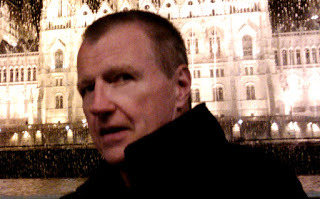 There I sat with a whole other complete book. So, I owned the rights to Dead Right There, which was what I had titled the sequel (or the second half of the first manuscript). Over the years, thousands of copies of Don’t Even Think About It have sold. People liked my blogs, and they liked the book. So I hope they will also like Dead Right There. “Dead right there,” was another phrase we used back in the day—“Do that and your dead right there.” There are a lot more action stories in this new one.
There I sat with a whole other complete book. So, I owned the rights to Dead Right There, which was what I had titled the sequel (or the second half of the first manuscript). Over the years, thousands of copies of Don’t Even Think About It have sold. People liked my blogs, and they liked the book. So I hope they will also like Dead Right There. “Dead right there,” was another phrase we used back in the day—“Do that and your dead right there.” There are a lot more action stories in this new one. Will there be a third Texas Detective book?
I don’t know. I don’t think so, but my wife keeps reminding me of strange stories I have told her, which I have forgotten! So, maybe there is another one in the future.
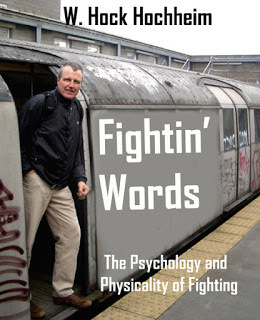 Clearly your schedule is packed with seminars and writing. Do you still find time to read for pleasure, and if so, which authors do you reach for on your bookshelf?
Clearly your schedule is packed with seminars and writing. Do you still find time to read for pleasure, and if so, which authors do you reach for on your bookshelf?I am gone so much, I write a lot on planes and in hotels. But I write obsessively at home, too. It is not healthy. I work out quite a bit, and listen to a lot of audio books. I usually have one book going on audio and one paper book going at the same time.
I recently went through a lot of Matt Helm books and revisited Mike Hammer. Also some Ian Fleming. I have read several Longmire books lately. Like I dissect a boxing match, I dissect these books for plot, pacing, style. Why do they work? When did they work? I think fiction is the poetry of non-fiction. The emotional connection that, most times, non-fiction can’t seem to touch. Let’s face it, more people know about the Civil War from the movie Gone with the Wind, than any history class they attended as kids and teens. Such emotional fiction is very powerful. The writer’s challenge is to make the uninteresting, interesting—you know those in-between scenes needed to knit a story together. Write it and skin it like Hemingway. What’s left is the poetry, if you’re good—If you’re very good.
I am currently reading a history book on Texas Ranger Frank Hamer and listening to The Memory Illusion, which covers the very latest neurology research on memory. If I pick a new author of a fiction series, it’s like I investigate them. But, most of book series leaves me scratching my head.
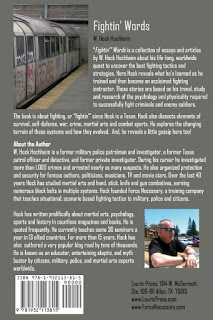 What are you looking for in the year ahead in your writing and in your seminars?
What are you looking for in the year ahead in your writing and in your seminars?I have to write a textbook on gun combatives. I do not teach marksmanship. I only cover interactive shooting with safe ammunition. I have amassed quite a bit of knowledge on how people shoot each together in common and some uncommon situations. You are not really learning to gunfight unless moving and believing people are shooting back at you. I use safe to painful, but not real ammo to organize this. And, I am pitching a book about a terrific female action character and Japanese terrorists. And my German publishers/distributors have accepted my third Gunther plot, Rio Grande Black Magic. I am really excited about it—as all writers say. It’s a lot for 2019.
 As far as seminars go, I am 65 years old and the stopwatch is ticking on how long I can zip around teaching hand, stick, knife and gun combatives. I tell people every weekend that I only play touch football and everyone else plays tackle. But when you’re older, even touch takes its toll. Then, there’s that flicker of macho, a flash of youth I shouldn’t have, then there's mistakes or missteps I shouldn't have taken. Wrong place. Wrong time. Wham. I just survived my most recent surgery from being hit with a stick at the wrong place, wrong time. But I will go on until I can’t or shouldn’t—or I get a big book deal that makes even Clive Cussler and the ghost of Clancy jealous!
As far as seminars go, I am 65 years old and the stopwatch is ticking on how long I can zip around teaching hand, stick, knife and gun combatives. I tell people every weekend that I only play touch football and everyone else plays tackle. But when you’re older, even touch takes its toll. Then, there’s that flicker of macho, a flash of youth I shouldn’t have, then there's mistakes or missteps I shouldn't have taken. Wrong place. Wrong time. Wham. I just survived my most recent surgery from being hit with a stick at the wrong place, wrong time. But I will go on until I can’t or shouldn’t—or I get a big book deal that makes even Clive Cussler and the ghost of Clancy jealous!********Thx Hock for sharing and for all you do for law enforcement across the country and around the world. You are a true warrior...
TO FIND HOCK ON THE WEB CLICK HERE
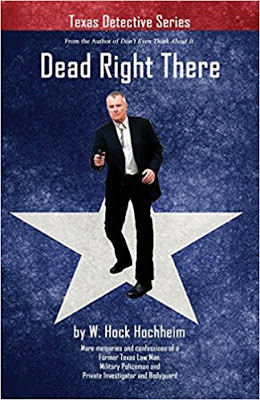 DEAD RIGHT THERE:MORE MEMORIES AND CONFESSIONSOF A FORMER MILITARY AND TEXAS LAWMAN,PRIVATE INVESTIGATOR, AND BODYGUARD
DEAD RIGHT THERE:MORE MEMORIES AND CONFESSIONSOF A FORMER MILITARY AND TEXAS LAWMAN,PRIVATE INVESTIGATOR, AND BODYGUARDIn the sequel to Don't Even Think About It, Hock Hochheim brings the readers even more stories based on his many years fighting crime as an MP in the military in Korea and then as a law enforcement officer and detective in Texas. Hock's case load involved about 20 cases a month for 17 years and included theft, burglary, rape, homicide, mass murder, serial murder and more in one of the largest, busiest counties in Texas. In his clear, articulate and no-nonsense, sometimes dark and humorous fashion he shares the drama and the irony law enforcement officers faced then and continue to face today. A world recognized expert on self-defense when Hock isn't writing fiction and non-fiction, he tours the world teaching tactics and strategies of self-defense based on his years of practice and training.
Published on December 24, 2017 07:24
December 17, 2017
AGE IS JUST A NUMBER—THE UNSINKABLE KATHRYN BRAUND
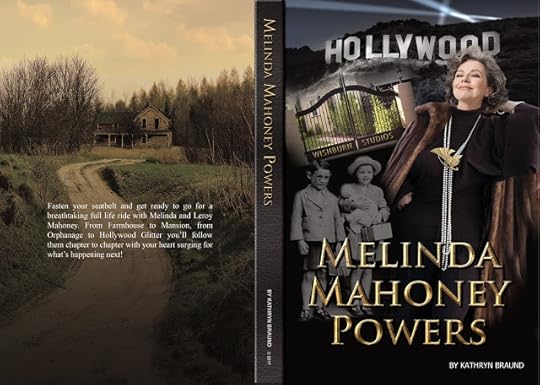 AGE IS JUST A NUMBERTHE UNSINKABLE KATHRYN BRAUND
AGE IS JUST A NUMBERTHE UNSINKABLE KATHRYN BRAUNDOne of the most amazing women in my life is my aunt-in-law, Kathryn Kitty Braund—world renown dog breeder and trainer, author of five highly regarded non-fiction dog related books, editor of a long-running must read newsletter for dog aficionados, and never less than a force to be reckoned with. Several weeks ago, she celebrated her 97th birthday with the publication of her 5th novel, Melinda Mahoney Powers.
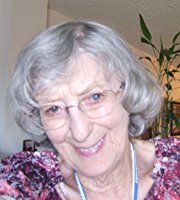 Did you get that? She’s 97 years-old and still putting words on paper, finishing what she writes, and manages all the switches and horns associated with modern publishing. At 97, she actively engages in social media, works on marketing and promotion, and is already working on her next novel. I can only hope to be half as sharp as Kitty if I get to the point of reaching my century mark.
Did you get that? She’s 97 years-old and still putting words on paper, finishing what she writes, and manages all the switches and horns associated with modern publishing. At 97, she actively engages in social media, works on marketing and promotion, and is already working on her next novel. I can only hope to be half as sharp as Kitty if I get to the point of reaching my century mark.Melinda Mahoney Powersis a fictional biography—the saga of life shaping events, the overcoming of crushing experiences, and the spectacular rise and unravelling of a glamorous 1940s stage and film star to rival Nora Desmond in Sunset Boulevard.
Taking a break from her active schedule, Kitty sat down with me to answer some of my many questions...
********Can you share some of the highlights of your 97 years hanging around on the planet earth?
One of the most devastating changes in my young life occurred when I was about five and living in San Francisco. I was in the back yard of our nice house playing with our dog when I heard loud noises from inside the house. It was my father beating my mother, not an uncommon occurrence. There was great commotion. My mother was crying as she and my oldest brother, Louis who was 11, were being thrown out of the house. Lou had confronted my alcoholic father to stop him beating my mother. My father literally kicked him out and banished him from the house. Afterward, my mother filed for divorce. We were then very poor and mother was ostracized by all the women she knew. In those days, women did not ever divorce husbands. They were supposed to suffer any indignity.
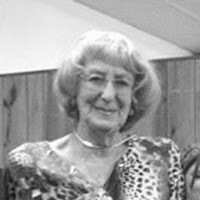 However, even though it was rough, we did just fine—my mother, with three sons and me, the lone daughter. As we grew up, the boys and I all worked, doing everything from paper routes to cleaning houses to taking care of children the same age as me, etc. Mother did send me to the YMCA in the Mission district because I was easily led into trouble. I became a child actress at the YMCA, and was sought after for plays with the city’s professional groups—even plays at Berkeley, and every year at Mt. Tamaulipas.
However, even though it was rough, we did just fine—my mother, with three sons and me, the lone daughter. As we grew up, the boys and I all worked, doing everything from paper routes to cleaning houses to taking care of children the same age as me, etc. Mother did send me to the YMCA in the Mission district because I was easily led into trouble. I became a child actress at the YMCA, and was sought after for plays with the city’s professional groups—even plays at Berkeley, and every year at Mt. Tamaulipas. I loved learning and wanted to grow up to be an English teacher. Sadly, during school, I was left out of social groups because I had grown to be very tall. I suffered from the related bullying, even though nobody could deny I was the school’s best actress.
When it came time for college, we could not afford for me to go. Instead, I went to a six month business school and learned keyboards. I did all kinds of jobs to help with family expenses, even working at the World’s Fair in the Shakespearean exhibit. Then I received an offer to go to Connecticut to perform in summer stock.
I was leading lady in all the show in Connecticut in which I appeared. This prompted me to move to New York City, thinking I would become a star. I had $5 for a week’s rent, and $1 for food. Undaunted, I quickly got a job with the Pennsylvania Railroad. Later, I got a job working for two men starting a printing business. I realized I had to give up my show business aspirations because I had to do other work to live. I returned to Calif to after my mother was hit by a car on her way to work. Once there, I found work as a waitress to support both of us and take care of her while she recuperated.
My employers in New York wanted me back. They even offered to send money for my travelling expenses. When my mother was able to take care of herself again, I took up the their offer, returning to NY to help them build up their business.
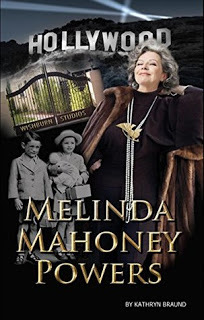 I still harbored dreams of being an actress and began working as a straight girl for two vaudevillians. I also tried out for other shows, but I was just too tall for the leading men then on Broadway. I did get hired to be part of a road show with Hollywood comedienne Zasu Pitts, with whom I toured Canada and U.S. This led to my going to Europe with the USO—and what a plus that was. Dean Martin and Jerry Lewis were part of the tour. When I returned to the United States, I found out Martin and Lewis had stolen all the gifts I bought in Switzerland, which they said I could store in their locker—ha!
I still harbored dreams of being an actress and began working as a straight girl for two vaudevillians. I also tried out for other shows, but I was just too tall for the leading men then on Broadway. I did get hired to be part of a road show with Hollywood comedienne Zasu Pitts, with whom I toured Canada and U.S. This led to my going to Europe with the USO—and what a plus that was. Dean Martin and Jerry Lewis were part of the tour. When I returned to the United States, I found out Martin and Lewis had stolen all the gifts I bought in Switzerland, which they said I could store in their locker—ha!I then met my first husband. I had my son Pat while we were in New York. Later I had my son Gary when we were back home in California. I kept working and became the manager for two top aerospace companies working on top secret projects for the military. I had 18 people working for me at one time. The job was taken away from me when I was replaced by a male manager. In those days women weren’t considered capable of holding down those types of jobs—ha! The switch resulted in the small division, which I had grown into becoming a part of one of the big companies, failing after they let me go. The same thing happened again when I worked for Boeing. However, that time, an Air Force commander threatened to take away projects and money from Boeing unless they gave me back my job. Boeing did not comply, thinking the commander was bluffing, but he followed through on his threats.
My first marriage went very sour, as my once nice husband had become an awful alcoholic, leading to divorce. I met Buzz, my second husband, in California. My boys were then nine and eleven. I was still working for military contractors, as Buzz did, but I had also begun to establish a reputation as a dog trainer. Buzz worked with me to turn our dogs into champions of their breed and obedience stars in dog shows.
I began writing while Buzz and I were station at the various military field bases where the civilian companies we worked for were assigned. After several years as a contributing editor to a big dog magazine, I was asked to write a book on Portuguese Water Dogs. I was thrilled and began researching everything I could about the breed. Writing a succession of similar dog books taught me great lessons.
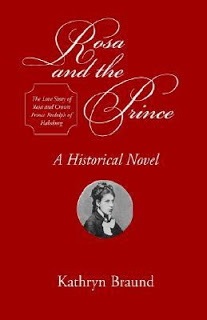 I wrote my first novel, Rosa and the Prince, after my Buzz began being taken by Alzheimer’s. It took four years to write because I researched for two years before beginning to put words on paper. I loved doing research. A dear wealthy friend gave me money to buy a house in southern California. Without that help, I would not have been able to do much.
I wrote my first novel, Rosa and the Prince, after my Buzz began being taken by Alzheimer’s. It took four years to write because I researched for two years before beginning to put words on paper. I loved doing research. A dear wealthy friend gave me money to buy a house in southern California. Without that help, I would not have been able to do much. Buzz was becoming significantly more difficult to care for. When we were station in Montana, we’d had a wonderful doctor who was fresh out of medical school. His father had been our previous doctor, and the son is still my doctor today. I spoke with him, and he said he could help me deal with Buzz’s challenges with Alzheimer’s. As a result, we moved back to Montana, where I still live today.
I can’t remember it all anymore, but those are the basics.
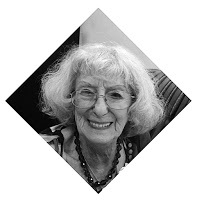 As a child, you had a somewhat hardscrabble upbringing. How did this shape you as a writer?
As a child, you had a somewhat hardscrabble upbringing. How did this shape you as a writer?I was always vitally interested in everything I did and everything happening around me. My experiences after being abused by my father and another man, made me both promiscuous and cold. Those experiences shaped my behaviors in life.
My experiences as a young actress helped me later realize understanding the structure of the plays in which I had appeared were an advantage for a writer. Scenes have to build in order to make audiences want more. I think all hopeful writers should spend as much time going to plays and observing how the scenes are constructed to keep audience interest high. One does the same thing within chapters when writing books. You must end chapters and scenes with audiences wanting more. Plays and how they are put together were wonderful teaching sessions for me.
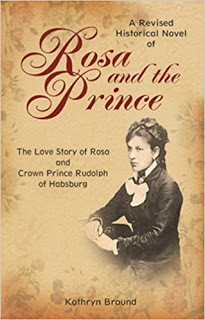 I was highly affected as a child and young adult by the horrific sex slave trade, which was barely recognized as such back then. I met girls whose lives were wasted in sexual slavery. Not that they could have escaped from what they were doing. With one exception, every book I have written has included a chapter or two examining a true story of how dangerous it can be for poorer children—boys as well as girls—who mistakenly think running away from home will make things better for them.
I was highly affected as a child and young adult by the horrific sex slave trade, which was barely recognized as such back then. I met girls whose lives were wasted in sexual slavery. Not that they could have escaped from what they were doing. With one exception, every book I have written has included a chapter or two examining a true story of how dangerous it can be for poorer children—boys as well as girls—who mistakenly think running away from home will make things better for them. Unfortunately, most are immediately caught up by pimps or evil men who ruin their lives. Sex trafficking is now worse than it has ever been in the world—and there doesn’t seem to be anything anyone can do about it. Look at the slave auctions that are now the rage in certain parts of the world. It’s awful. I interviewed a couple of these girls back when I lived in New York. Horrendous.
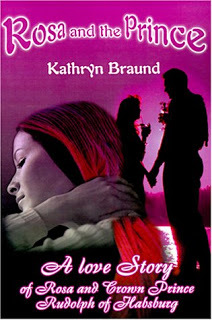 I do not really think of my childhood as hardscrabble. My mother was an absolutely wonderful woman, and I surely wanted to be much like her in attitude and spirit. She somehow managed everything for us without ever a complaint. As I grew up, she sewed my dresses and made great clothes out of old ones for me. Can you imagine, I was sixteen and working for Lane Bryant before I had my first store bought dress. Boy, that was a celebration (nothing against my mother’s sewing)!
I do not really think of my childhood as hardscrabble. My mother was an absolutely wonderful woman, and I surely wanted to be much like her in attitude and spirit. She somehow managed everything for us without ever a complaint. As I grew up, she sewed my dresses and made great clothes out of old ones for me. Can you imagine, I was sixteen and working for Lane Bryant before I had my first store bought dress. Boy, that was a celebration (nothing against my mother’s sewing)!I still don’t know how she did everything she did for all of us—always with love and a smile. I took care of her before she passed away, and it was amazing how many people she knew who swarmed to see her. They had all been helped by her wisdom, even though she was naive in many ways.
Were you a reader when you were a youth, and if so, what authors inspired you?
One of my high school teachers, a professor, dealt with Roman and Greek history. I played Cassandra in plays he wrote or adapted for his wife and friends. I have always been enamored by ancient history. I thrill to Roman, Greek, Anatolian and Mesopotamia history. I spent many hours at our local San Francisco library, about five blocks from home. I gobbled up the many romantic stories about men who saved poor young women and then married them. I had no favorite writer as I adored everything I read.
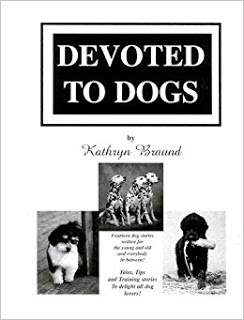 For many years you wrote and published a regular newsletter/magazine for the canine community. What did the experience teach you about being a writer?
For many years you wrote and published a regular newsletter/magazine for the canine community. What did the experience teach you about being a writer?I edited three newsletters including designing the magazines, handling the layout, and gathering and designing the ads. I built one newsletter up from twelve pages to a hundred-and eight-four page color magazine with high quality ads. Those experiences taught me to work hard, to put out the best for the readers and advertisers. I learned a lot about creativity. I believe working hard at everything I did—going back and examining everything to make it the best I could produce—helped give me recognition as a top editor and newsletter publisher in my field. Again, I always went back to my acting days, working not only for smoothness, but also for uniqueness in what I did—whether it be an ad or copy.
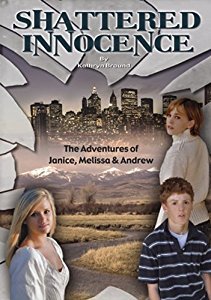 What made you switch from non-fiction to novel writing?
What made you switch from non-fiction to novel writing?As a young girl, I wrote many stories—actually, I started many stories, but had little confidence anything I did was good enough, so I never finished any. Part of this lack of confidence was because of my height. I always suffered from lack of confidence, except in acting—because I was not me when I was acting. I seldom thought what I wrote was any good, so I put those half stories away. Whenever I find remnants of some, I am amazed at how good they could have been. I switch to fiction after many years of newsletter and magazine writing, because I wanted to express myself better.
What compels you to keep writing?
I love writing. It does what acting did for me. It takes me away from myself. I love looking up a word and seeing where it came from, or looking up unusual facts I could possibly use in a story. Writing satisfies my workaholic need. There are so many things I learned about life through writing. I wish I had more time on earth to find ways to express myself better and effectively say the things I am really trying to say.
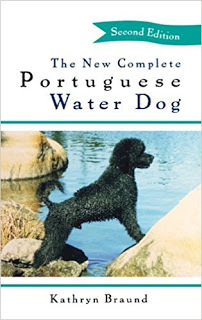 What is your writing process. Do you outline or fly by the seat of your pants and follow where your story takes you?
What is your writing process. Do you outline or fly by the seat of your pants and follow where your story takes you?As a girl, I made outlines as I was told to do. I’ve found, however, I don’t fare well using outlines. I do think about stories I want to write for a long time—perhaps six months—before I put any words down. I research things I think about as it helps me bring a story to life. I then know if I want to move ahead. I do follow where the story takes me, which I think is sometimes eerie.
What was the inspiration for your latest novel, Melinda Mahoney Powers?
I had been reading stories about people in jail for life, who had not committed the crime of which they were convicted. I felt compelled to develop a story about one of them. I started out thinking of a serial killer story and what happened in his earlier life to make him follow through because of his twists of mind. The story was supposed to be about Leroy Mahoney. However, his sister Melina, the little girl in the Studebaker (as I first saw her in my mind) and her forever memory at seeing her brother as she did, took over. I simply had to follow the two young children and see how they lived with the horrific abuse both had seen or experienced.
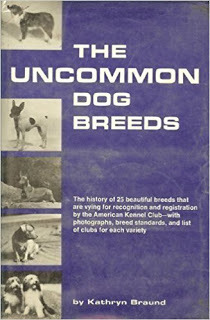 Melinda began to worry my mind because I kept feeling she could not put aside, forgive, or forget what she had seen, and it would eventually prove to be the total downfall of her life. There are lots of people like her. Leroy was always trapped by the horrors of what was done to him, but his retreat into gentleness was different than Melinda’s anger fueled response.
Melinda began to worry my mind because I kept feeling she could not put aside, forgive, or forget what she had seen, and it would eventually prove to be the total downfall of her life. There are lots of people like her. Leroy was always trapped by the horrors of what was done to him, but his retreat into gentleness was different than Melinda’s anger fueled response. I loved both of characters and the people they met and lived with. Frankly, while writing, I kept asking God to keep me here in this life until I finished the story. Somehow, many of the words simply flowed out. I puzzled over some of them as I had no idea where they came from. Others parts of the story came from parts of me or scenes I had personally endured, But through it all, it was the love I felt for Melinda and Leroy swelling out of me and onto the page.
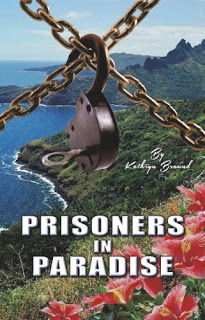 Do you have a favorite among your novels, and if so, why?
Do you have a favorite among your novels, and if so, why?No favorite. I feel each had a different reason to write them, even though the genres were different. Hopefully, each also served a different need for the people who read them. Of course, I wrote Rosa and the Prince for my mother, who had always wanted me to tell her story. I’m sure Rosa is not quite as she would have told it, but it is the way it came to me. I let my imagination take over.
I love Rosa and the Prince because I spent so much time with the research. Life in the time period in which Rosa is set was very difficult for those who had to work for royalty. I wanted my mother’s strong will and pleasing personality to come through even though tragedy was ever present.
Shattered Innocenceallowed me to vent my feelings pertaining to the horrendous sex trafficking spinning the world around and destroying so many lives. I wanted people to pay attention to the situation. It was my way of doing something about it, no matter how small or insignificant my shout might be.
 Prisoners In Paradise, I believe, is an excellent book with climaxes in all the right places. I’m not much swayed by marketing, so it is not a story everyone is enamored to read. However, you have to be true to yourself and write what drives you.
Prisoners In Paradise, I believe, is an excellent book with climaxes in all the right places. I’m not much swayed by marketing, so it is not a story everyone is enamored to read. However, you have to be true to yourself and write what drives you.Now I have fallen in love with Melinda Mahoney Powers. She certainly isn’t perfect by any means, but we find a lot of people in the world like her, and I wanted readers to see how and why she destroyed herself. It’s a cautionary tale.
Murder might not be light-hearted, but many seniors are. Featuring senior characters an writing about their fascinating lives always keeps my fingers flying on the keyboard.
I cannot pick a favorite from my list of books. But if I add them together, I find I like many things about each one. As I write each book, I am trying to be honest and say what is truly in my heart—which can be different things at different times.
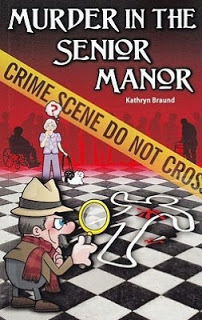 From your experience, what advice would you have for senior writers?
From your experience, what advice would you have for senior writers?I say no one should write about something they do not know. Write about experiences that have happened in your life. I do not believe there is anyone on earth who hasn’t had a wonderful life, despite all the tragedies we all must suffer—they are what hones us. They make us better.
Make up stories about instances in your life that change your thinking or helped someone else. Write about you, about your friends—but with different names and places. Just keep writing. If you enjoy working on a page of writing, good, put yourself right into the page. Readers gain interest because they can feel your emotion.
*******Wow! Thx to my wonderful Aunt (in-law) Kitty for her candor and willingness to share so much. I can’t wait to read what she writes next...
Published on December 17, 2017 22:20
December 15, 2017
STANDING TALL—A TRIBUTE TO BILL CRIDER
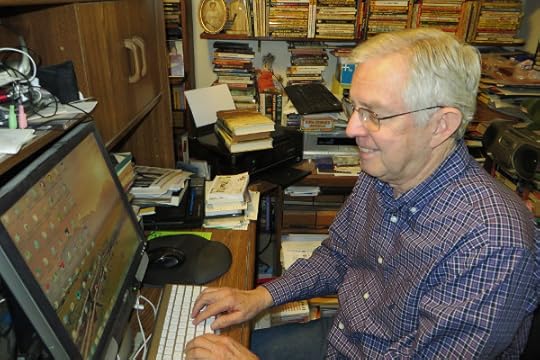 STANDING TALL—A TRIBUTE TO BILL CRIDERAN ENTRY IN BILL CRIDER DAY HOSTED BY
PATRICIA ABBOTT
Bill Crider is arguably my oldest friend connected to the mystery genre and the writing world. There are a few other friends—Cap’n Bob Napier, Steve Mertz, James Reasoner—who come in as a photo finish for that dubious honor, but as I remember it, Bill pipped them all. I cherish each one of those friendships, as like with Bill, I’ve never heard a harsh word or an unsupportive comment from any of them directed toward any other writer, wanna-be writer, or fan/reader of mysteries and Westerns.
STANDING TALL—A TRIBUTE TO BILL CRIDERAN ENTRY IN BILL CRIDER DAY HOSTED BY
PATRICIA ABBOTT
Bill Crider is arguably my oldest friend connected to the mystery genre and the writing world. There are a few other friends—Cap’n Bob Napier, Steve Mertz, James Reasoner—who come in as a photo finish for that dubious honor, but as I remember it, Bill pipped them all. I cherish each one of those friendships, as like with Bill, I’ve never heard a harsh word or an unsupportive comment from any of them directed toward any other writer, wanna-be writer, or fan/reader of mysteries and Westerns.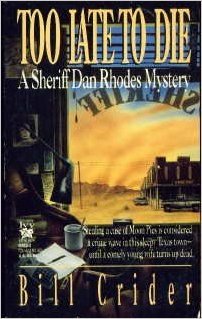 My friendship with Bill Crider became a touchstone of sorts for me. As James Reasoner mentioned in his tribute to Bill today, anytime I met Bill it was as the cliché of no time appearing to have passed since we were last in each other’s company. Conversations were picked up from the exact point where they last left off, and there was always excitement and a willingness to share all of the experiences and knowledge related to our mutual interests in books, movies, writing, and much more.
My friendship with Bill Crider became a touchstone of sorts for me. As James Reasoner mentioned in his tribute to Bill today, anytime I met Bill it was as the cliché of no time appearing to have passed since we were last in each other’s company. Conversations were picked up from the exact point where they last left off, and there was always excitement and a willingness to share all of the experiences and knowledge related to our mutual interests in books, movies, writing, and much more.Back when the West was wild and the East was still the mysterious Orient, mystery fandom wasn’t a simple matter of keeping abreast of daily blogs, publisher’s e-blasts, and Facebook group posts…it had to be earned.
I’m not kidding...In 1973, DAPA-EM(which stood for Elementary, My Dear APA—don’t ask, because I don’t know the origin of the name) became the first and only APA (Amateur Press Association) devoted to the mystery genre.
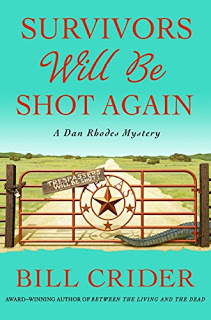 APAs were limited membership groups whose members produce copies of their amateur magazines, which were then sent to an Official Editor. The Official Editor then collated and bound the magazines together, mailed the bulk result to the APA members across the country (and sometimes internationally), kept track of the APA’s finances (dues to cover mailing expenses), maintained a waiting list of contributors, and made sure current contributors met the requirements for minimum activity—which in the case of DAPA-EM was four pages of mystery related information or research (three of which had to be original material) every four months. Since issues were gathered and sent out every two months, a contributor could miss only one issue before facing an inactivity deadline.
APAs were limited membership groups whose members produce copies of their amateur magazines, which were then sent to an Official Editor. The Official Editor then collated and bound the magazines together, mailed the bulk result to the APA members across the country (and sometimes internationally), kept track of the APA’s finances (dues to cover mailing expenses), maintained a waiting list of contributors, and made sure current contributors met the requirements for minimum activity—which in the case of DAPA-EM was four pages of mystery related information or research (three of which had to be original material) every four months. Since issues were gathered and sent out every two months, a contributor could miss only one issue before facing an inactivity deadline.DAPA-EMwas originally founded with six contributors. By the time I joined in the late 70’s, DAPA-EM was up to its limit of thirty-five members with a half-a-dozen names on the waiting list. This was hardcore, chisel and stone, tape and paste, mimeograph machine, surreptitious Xeroxing at work, seat of the pants publishing…and it was probably the most fun I’ve ever had in the mystery genre.
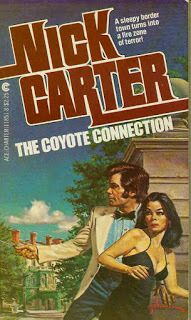 I established cherished friendships, acquaintances, and contacts, which have continued across the decades and are still viable today. Bill, of course, was among those ranks. Outside of DAPA-EM, Bill and I both got our professional publishing start in the pseudonymous pages of the men’s adventure paperback series, which were hugely popular in the ‘70s and ‘80s—Bill writing a Nick Carter Killmaster tale, and I galloping out with the Western series Diamondback. From there however, Bill’s output of consistently excellent novels in many genres exploded. His Sheriff Dan Rhodes books became a staple of readers/fans' end of year Ten Best Novels lists. And his Texas Vigilante Westerns are, IMHO, among the best in the revenge genre ever written.
I established cherished friendships, acquaintances, and contacts, which have continued across the decades and are still viable today. Bill, of course, was among those ranks. Outside of DAPA-EM, Bill and I both got our professional publishing start in the pseudonymous pages of the men’s adventure paperback series, which were hugely popular in the ‘70s and ‘80s—Bill writing a Nick Carter Killmaster tale, and I galloping out with the Western series Diamondback. From there however, Bill’s output of consistently excellent novels in many genres exploded. His Sheriff Dan Rhodes books became a staple of readers/fans' end of year Ten Best Novels lists. And his Texas Vigilante Westerns are, IMHO, among the best in the revenge genre ever written. A small selection from Bill's massive library... As a collector, I stand in awe of Bill’s epic accumulation of first editions, rare paperbacks, and close to every oddball related mystery or Western title ever published. An amazing accomplishment that will never be matched.
A small selection from Bill's massive library... As a collector, I stand in awe of Bill’s epic accumulation of first editions, rare paperbacks, and close to every oddball related mystery or Western title ever published. An amazing accomplishment that will never be matched.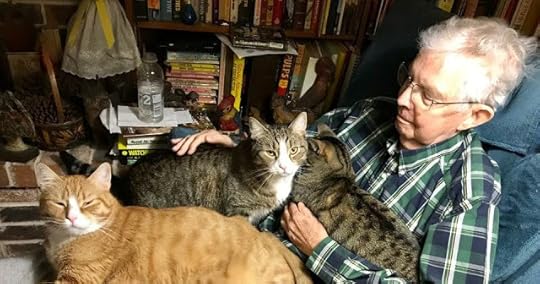 Bill and his VBks (very bad kitties)--who became an Internet staple after Bill rescued them...
Bill and his VBks (very bad kitties)--who became an Internet staple after Bill rescued them...Gentleman, scholar, teacher, erudite writer, and bon vivant,
Bill Crider embodies everything good used to define friendship. His support has been a constant in my career. As he currently fights his deadly battle with cancer, I see him in the role of the many staunch, fast thinking, hardmen heroes he wrote about. You know the ones I’m talking about—the heroes who can never be counted out no matter what the odds...
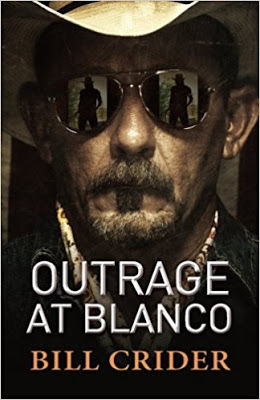
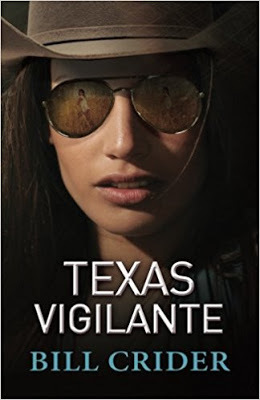
Published on December 15, 2017 10:09

